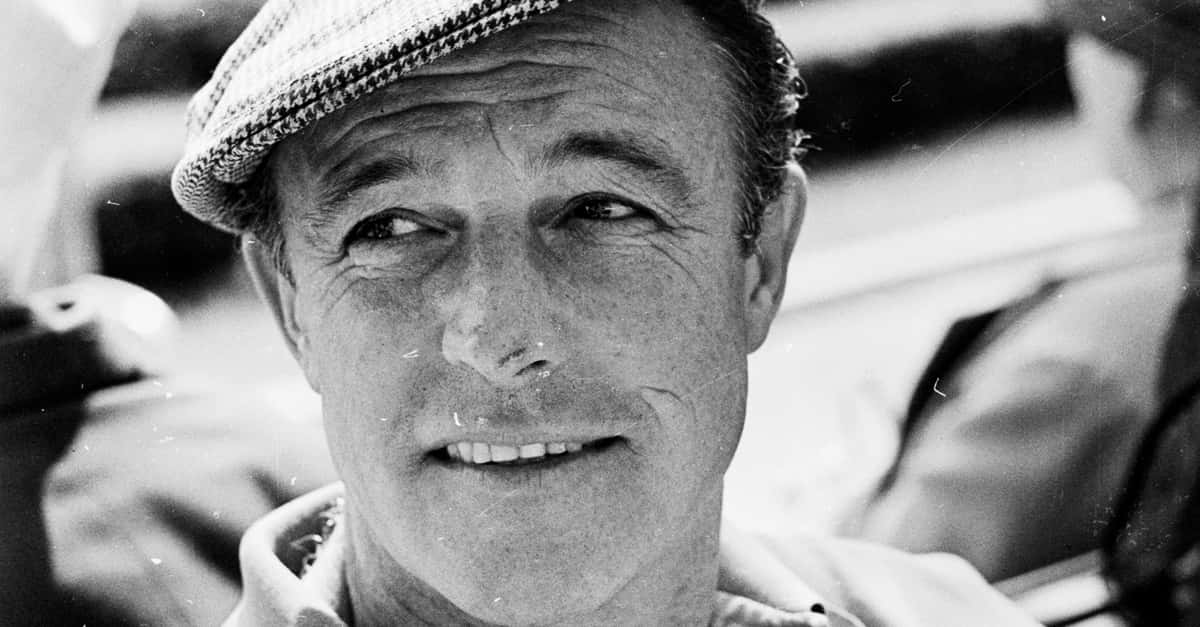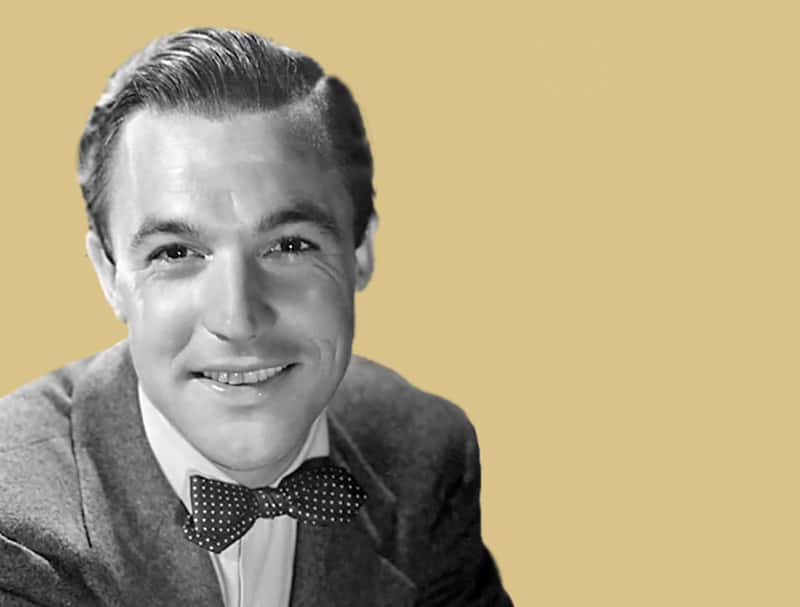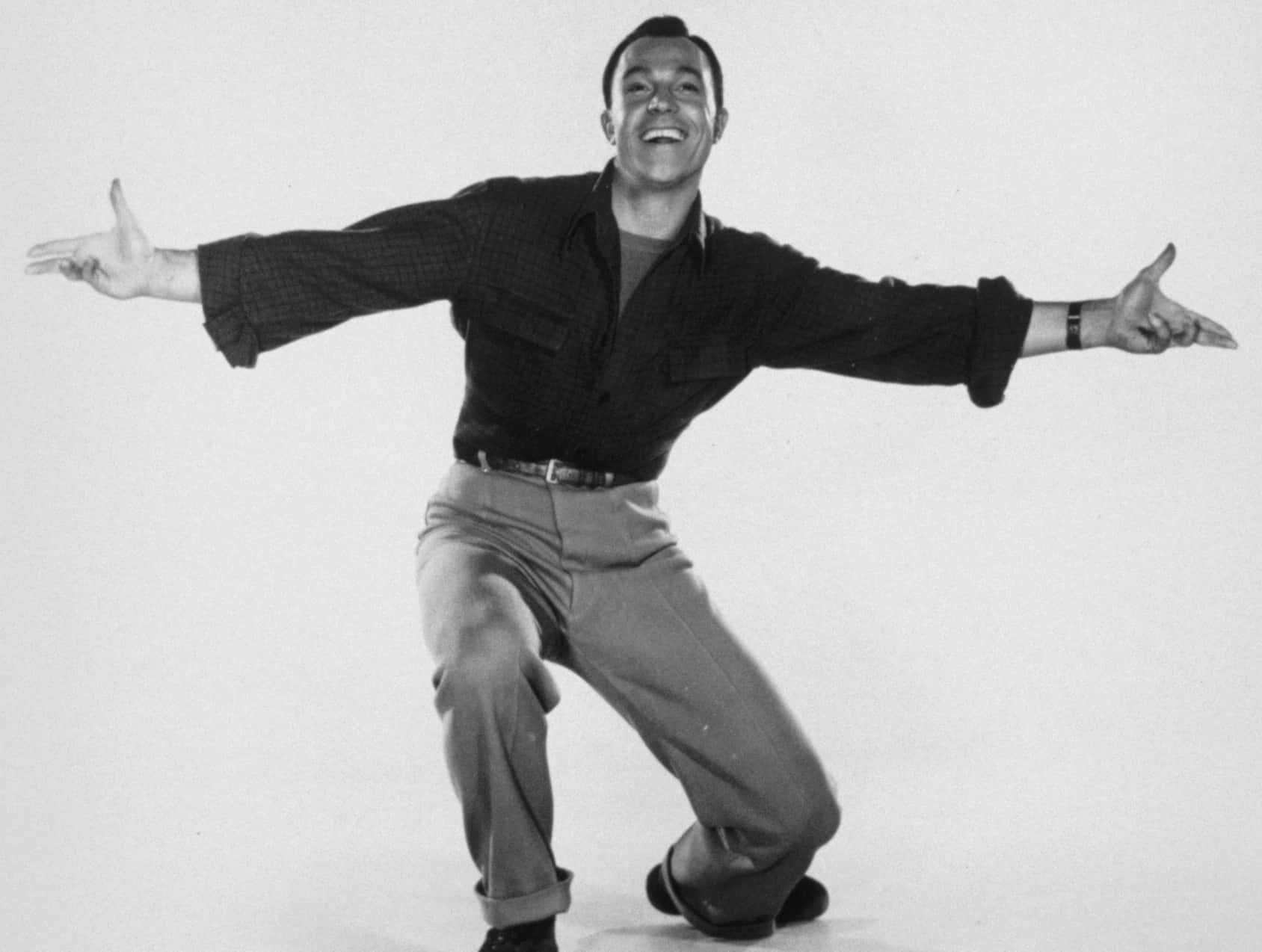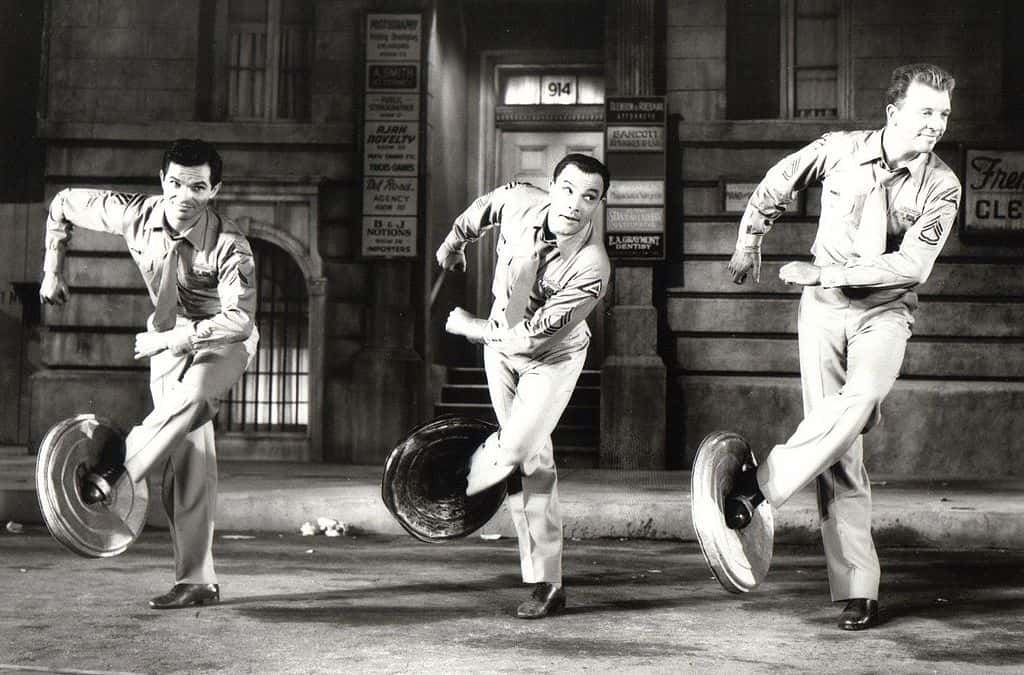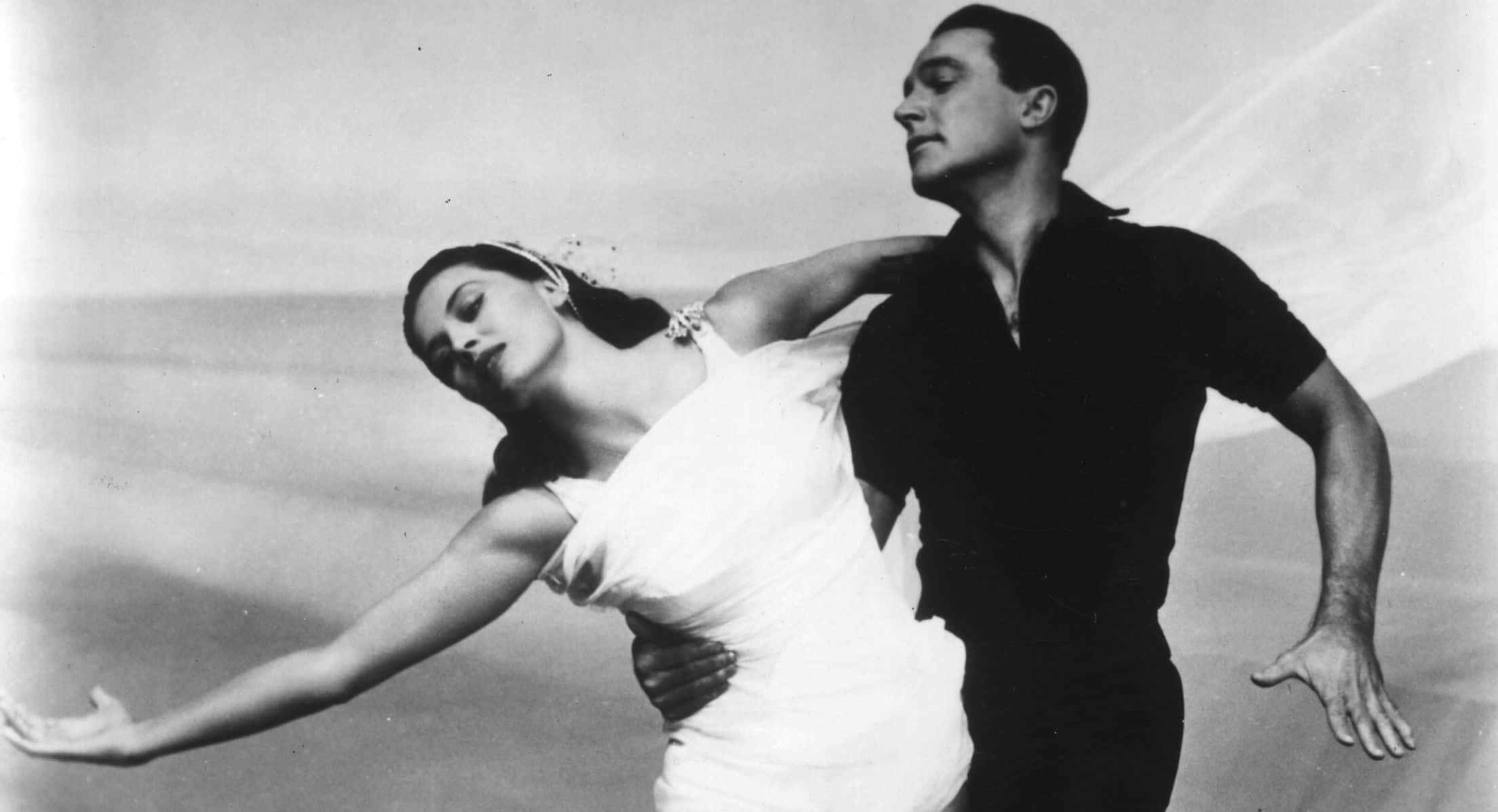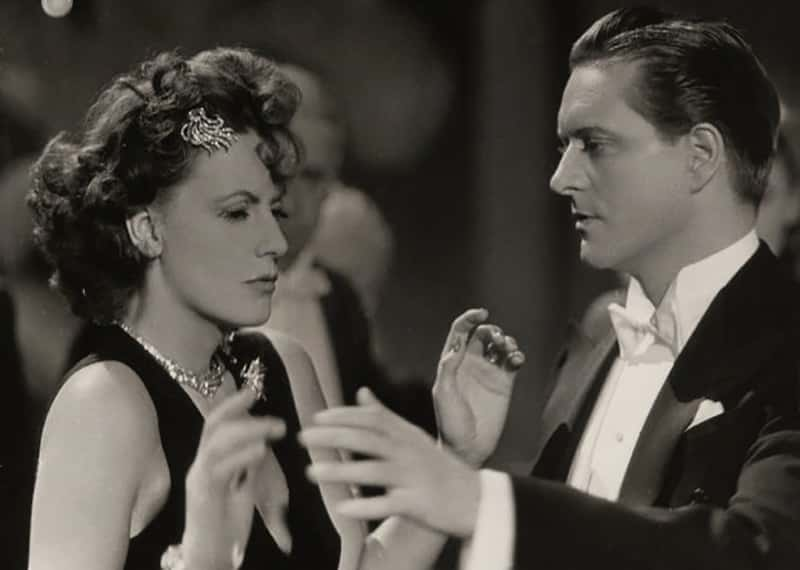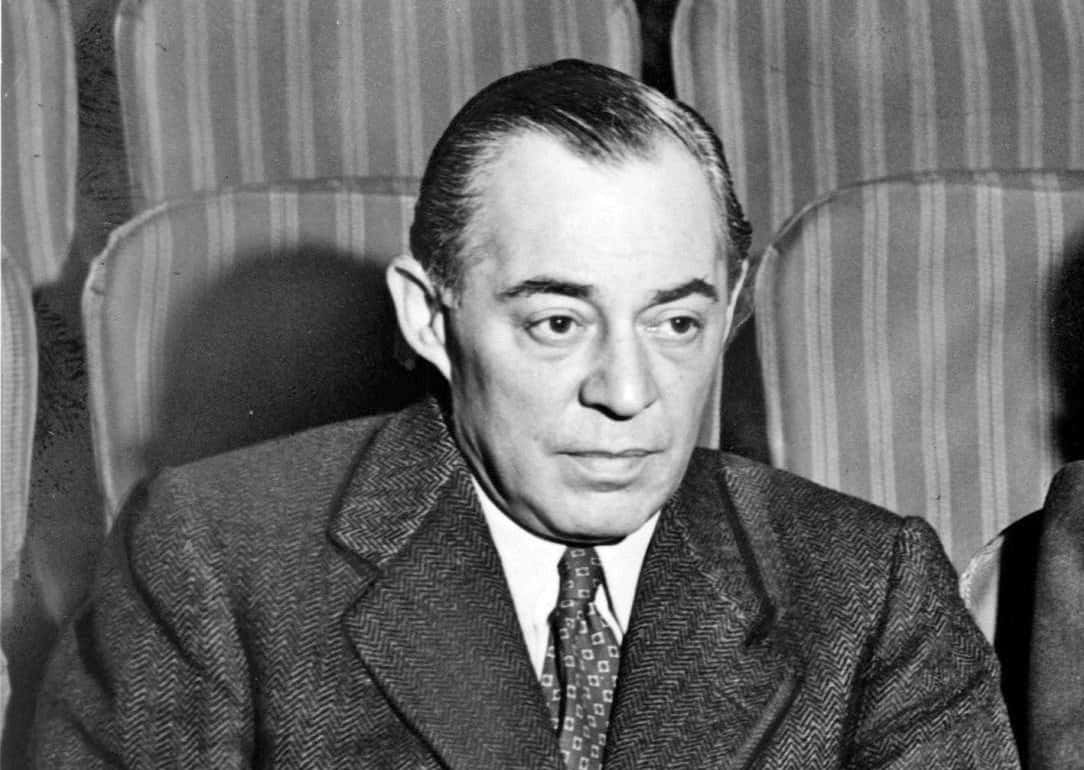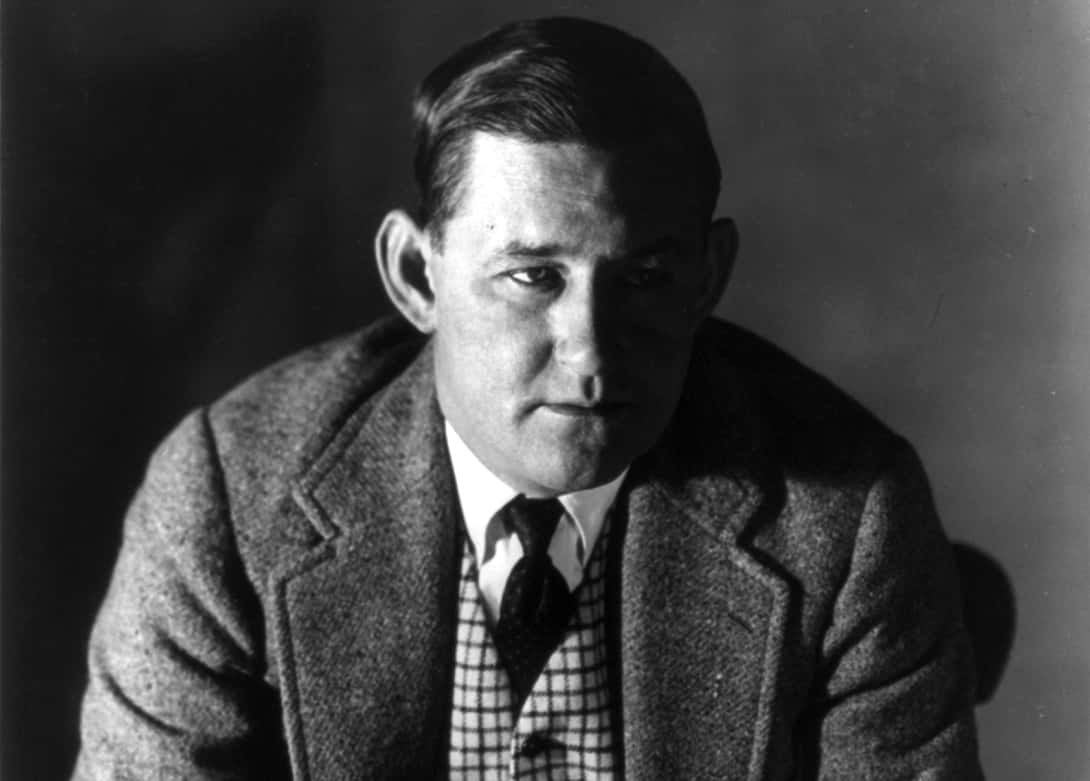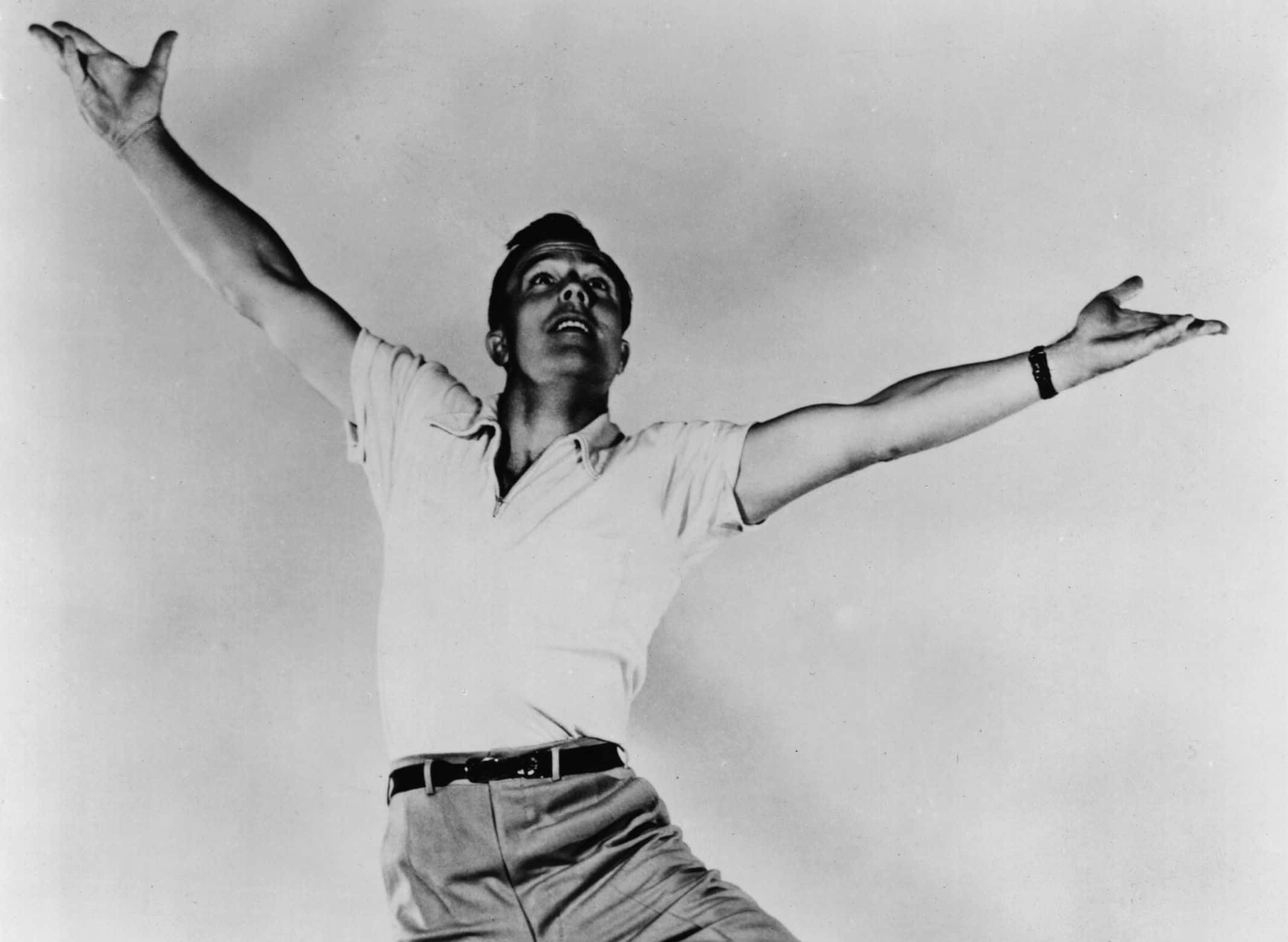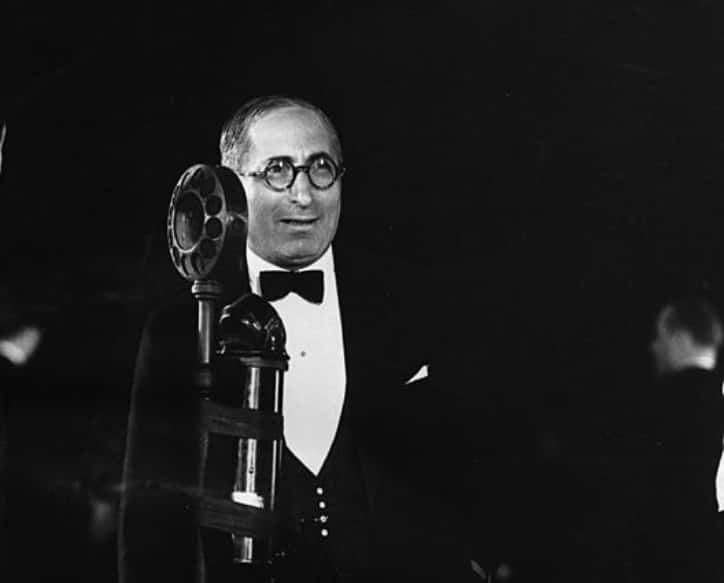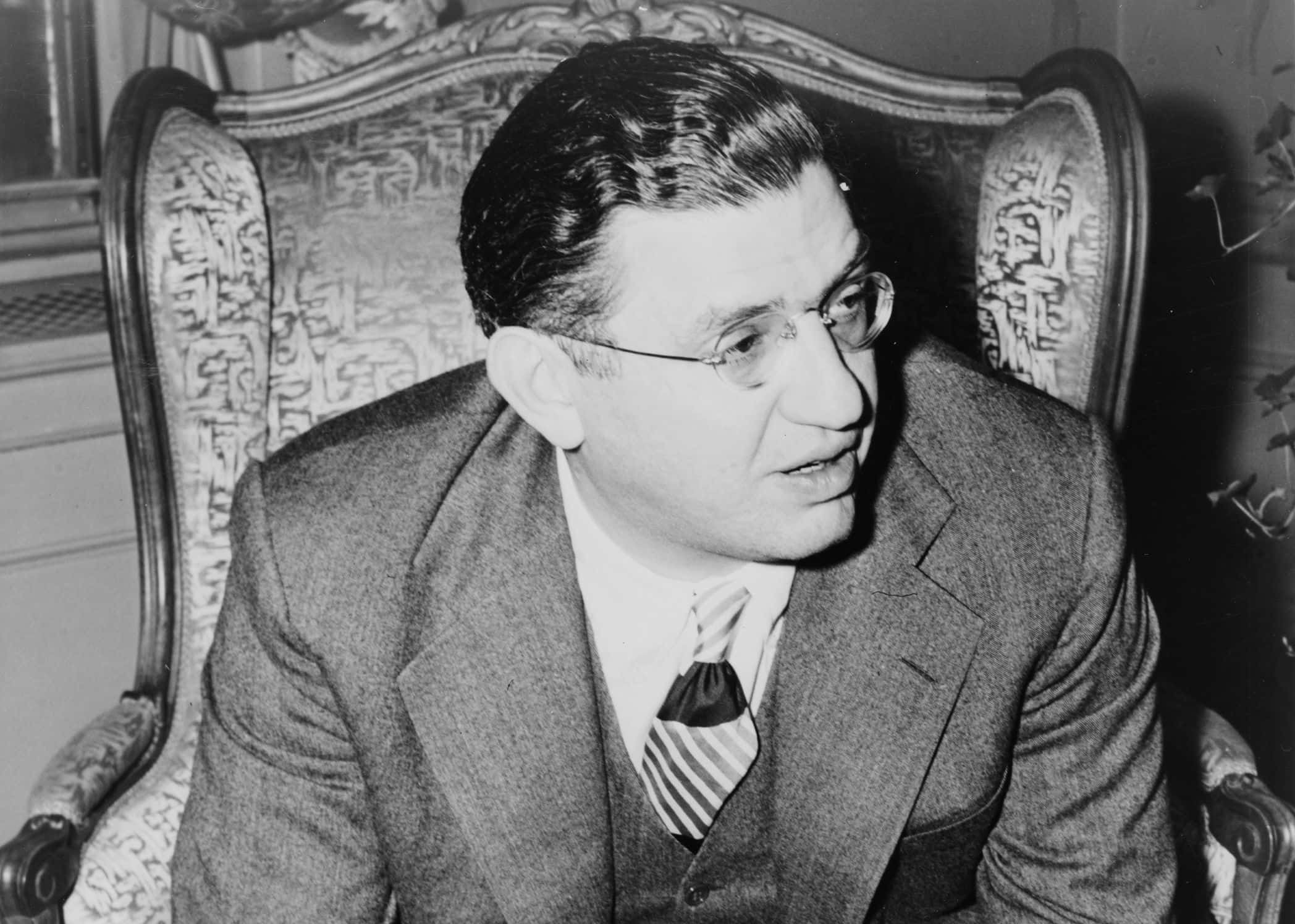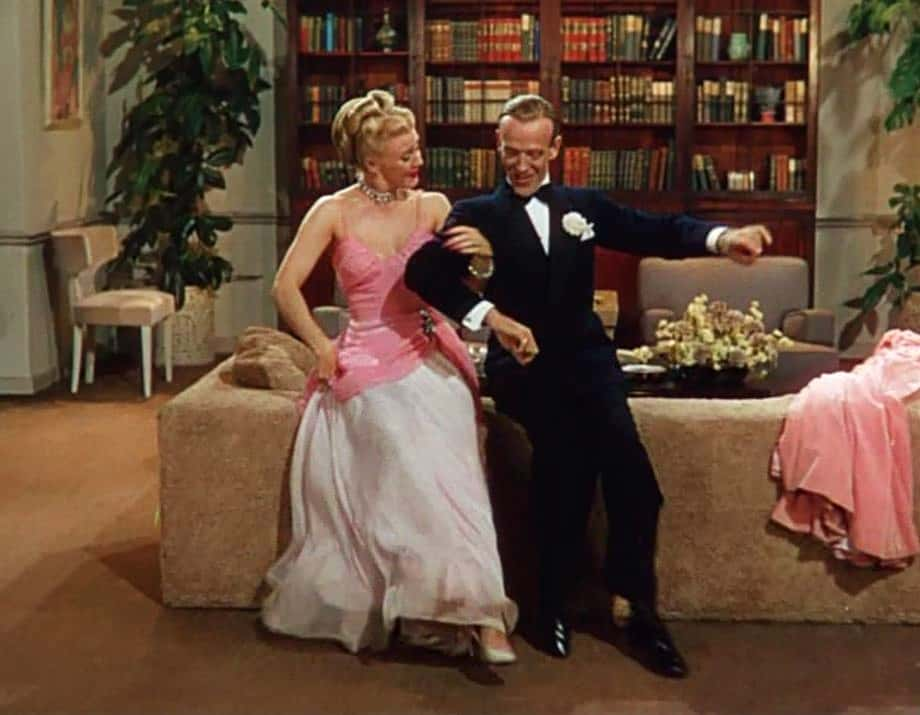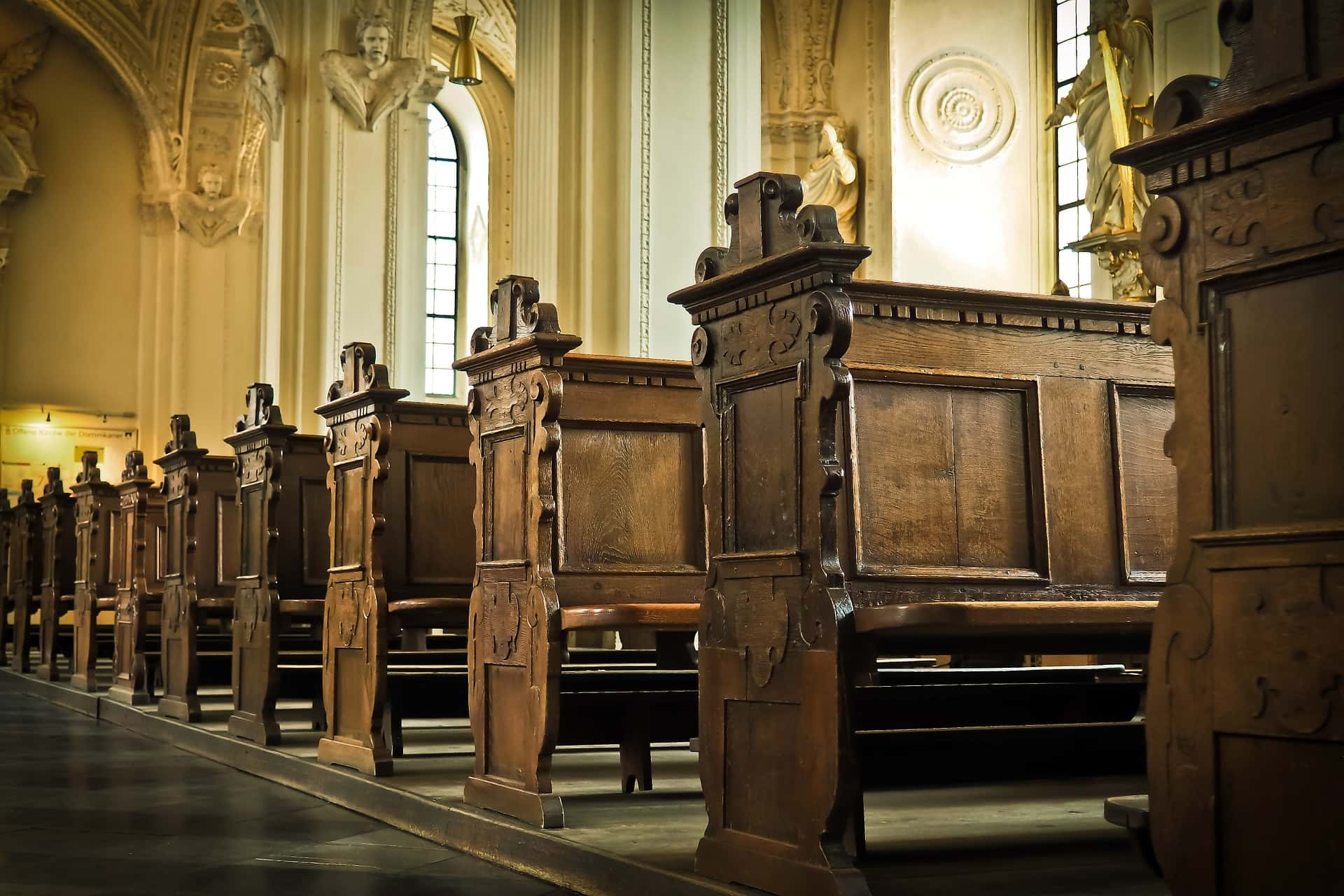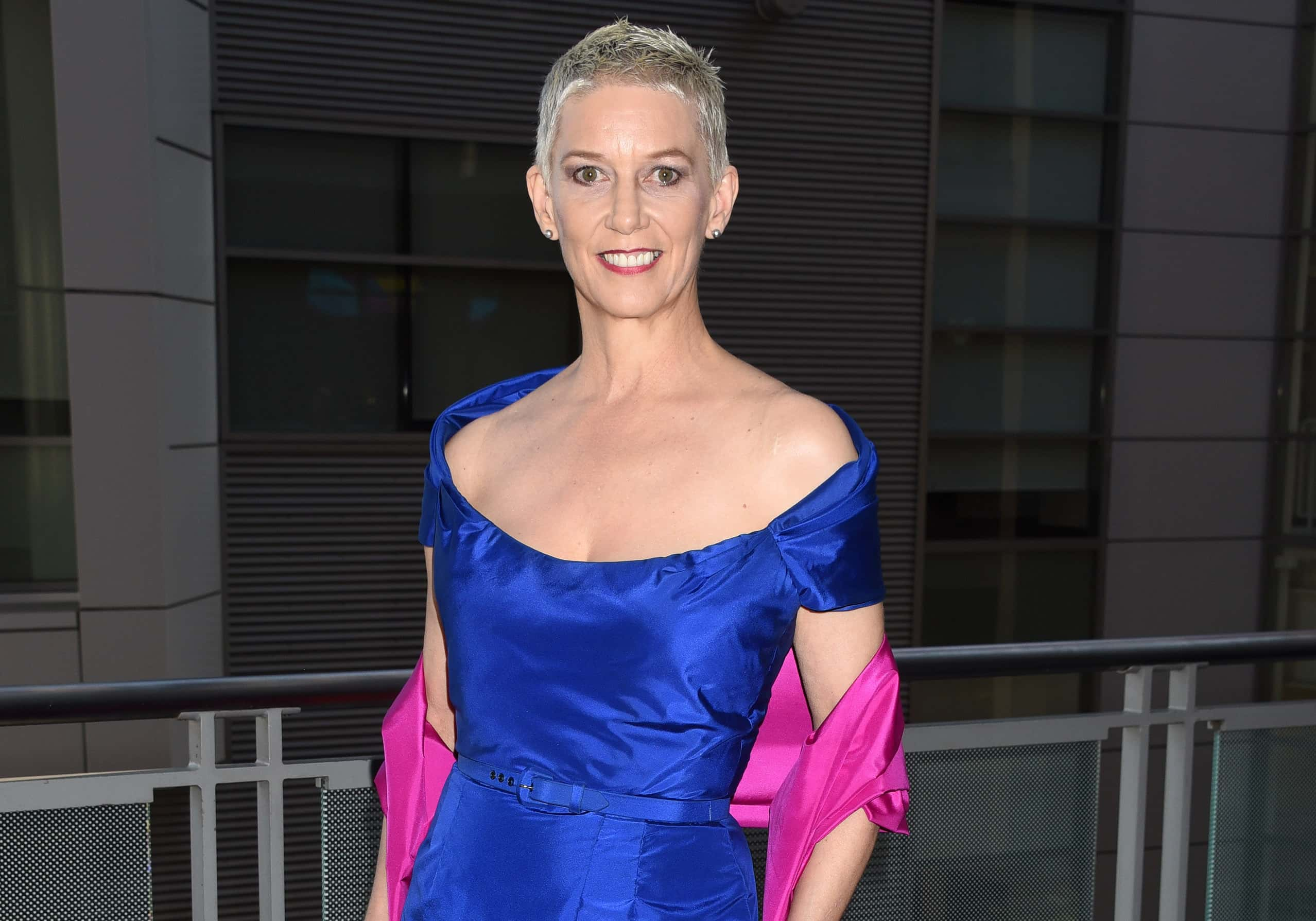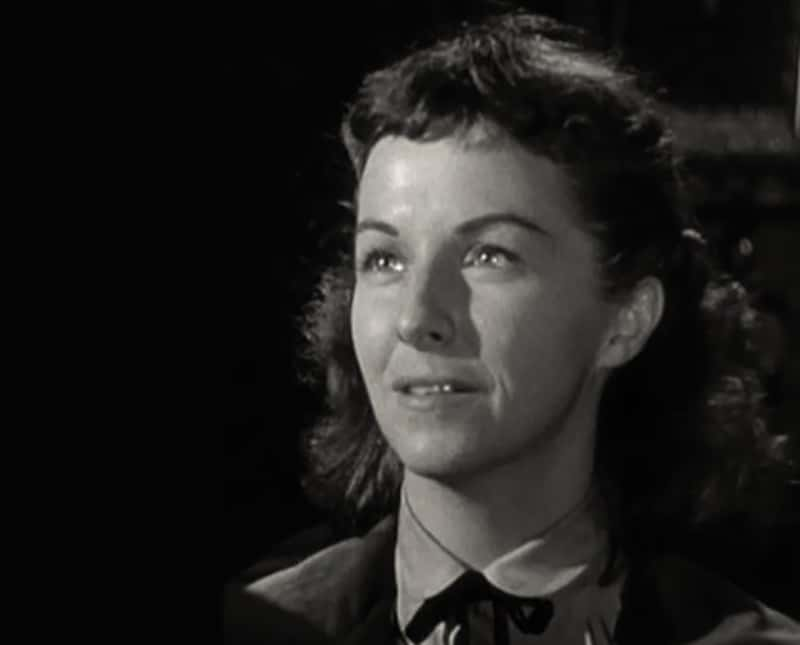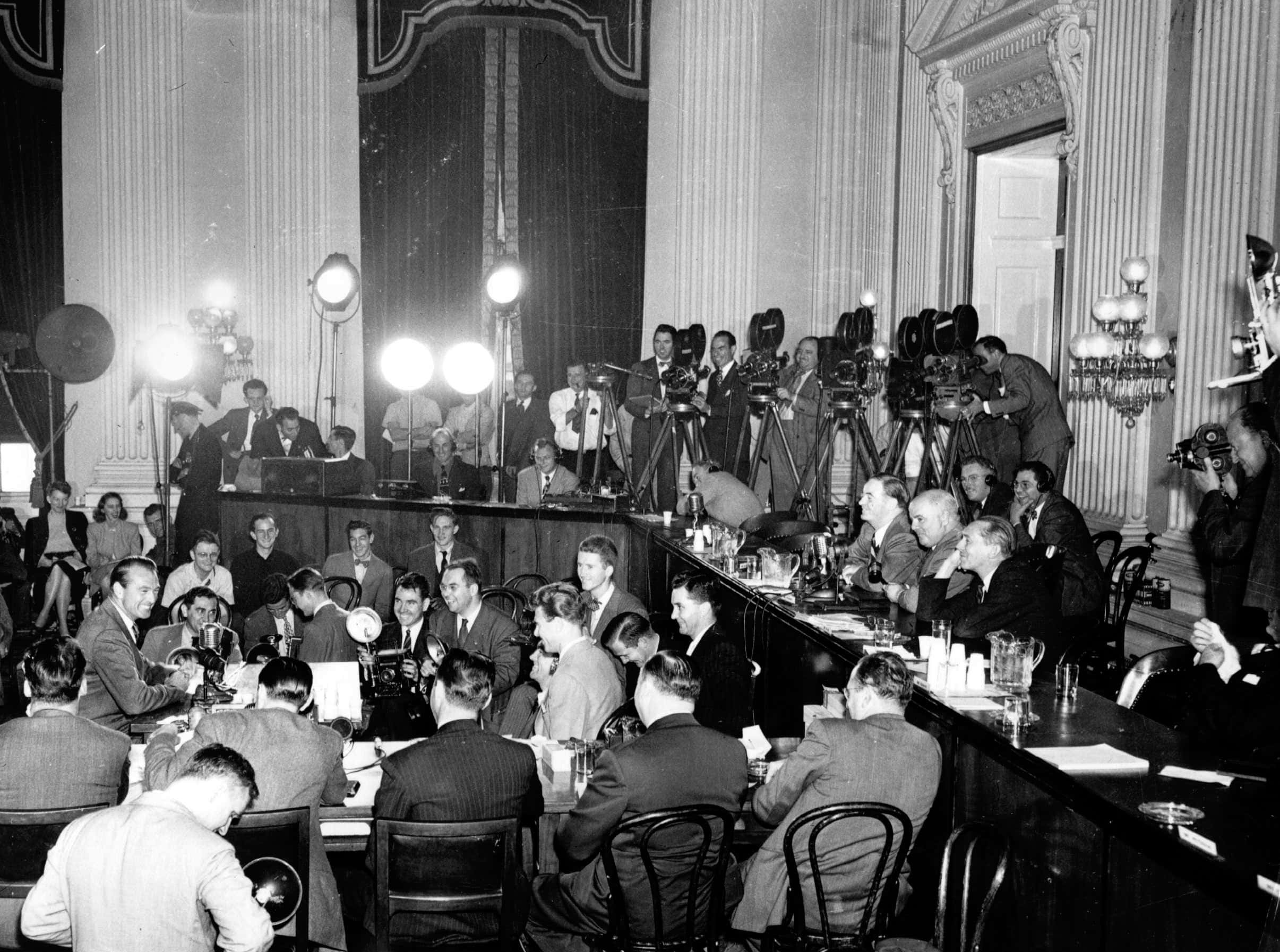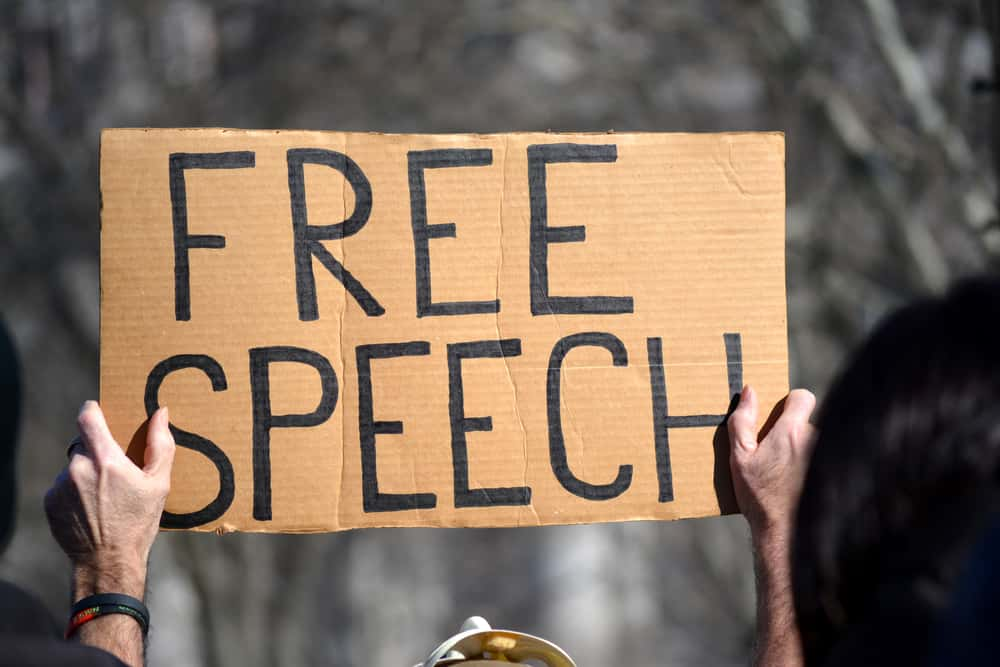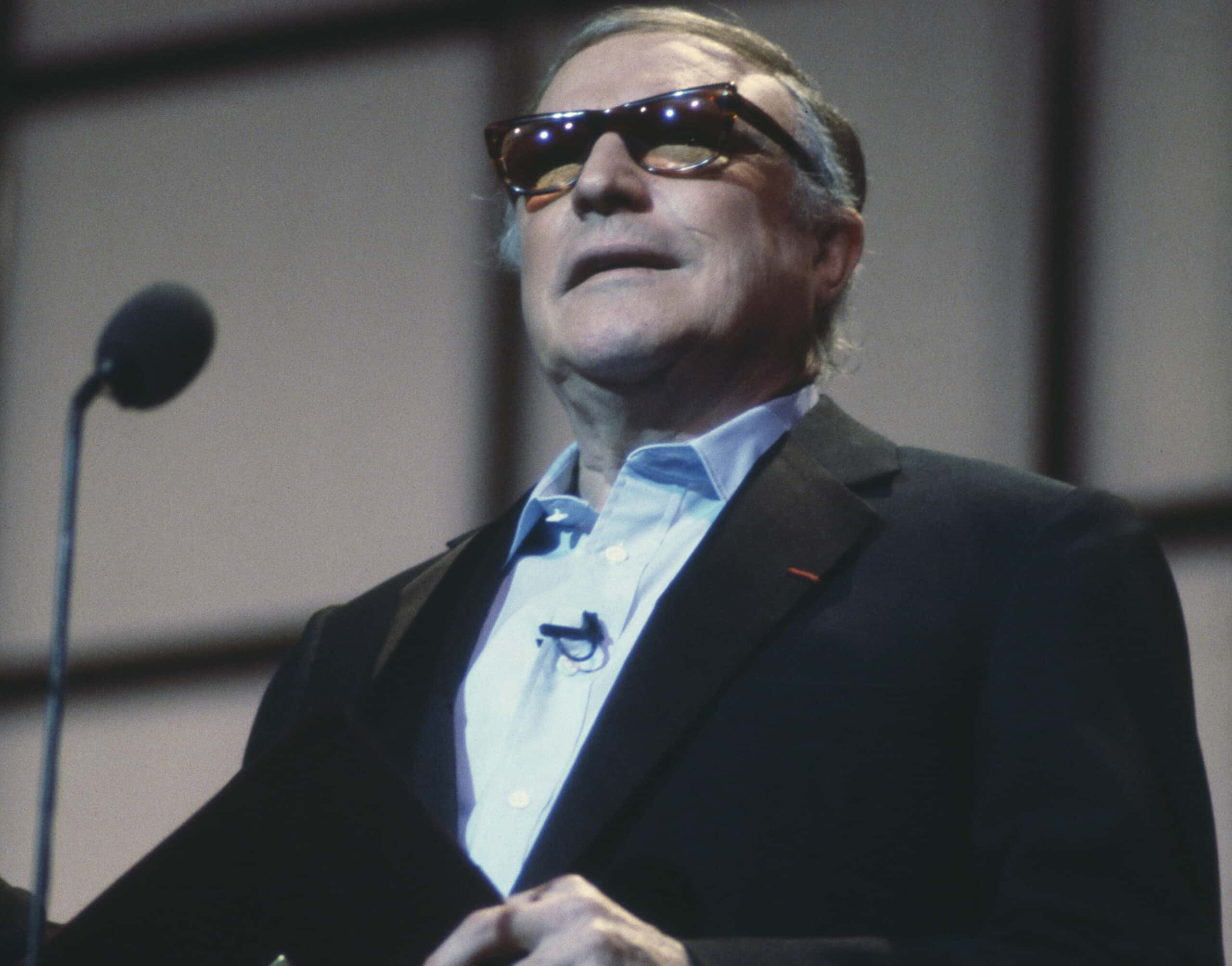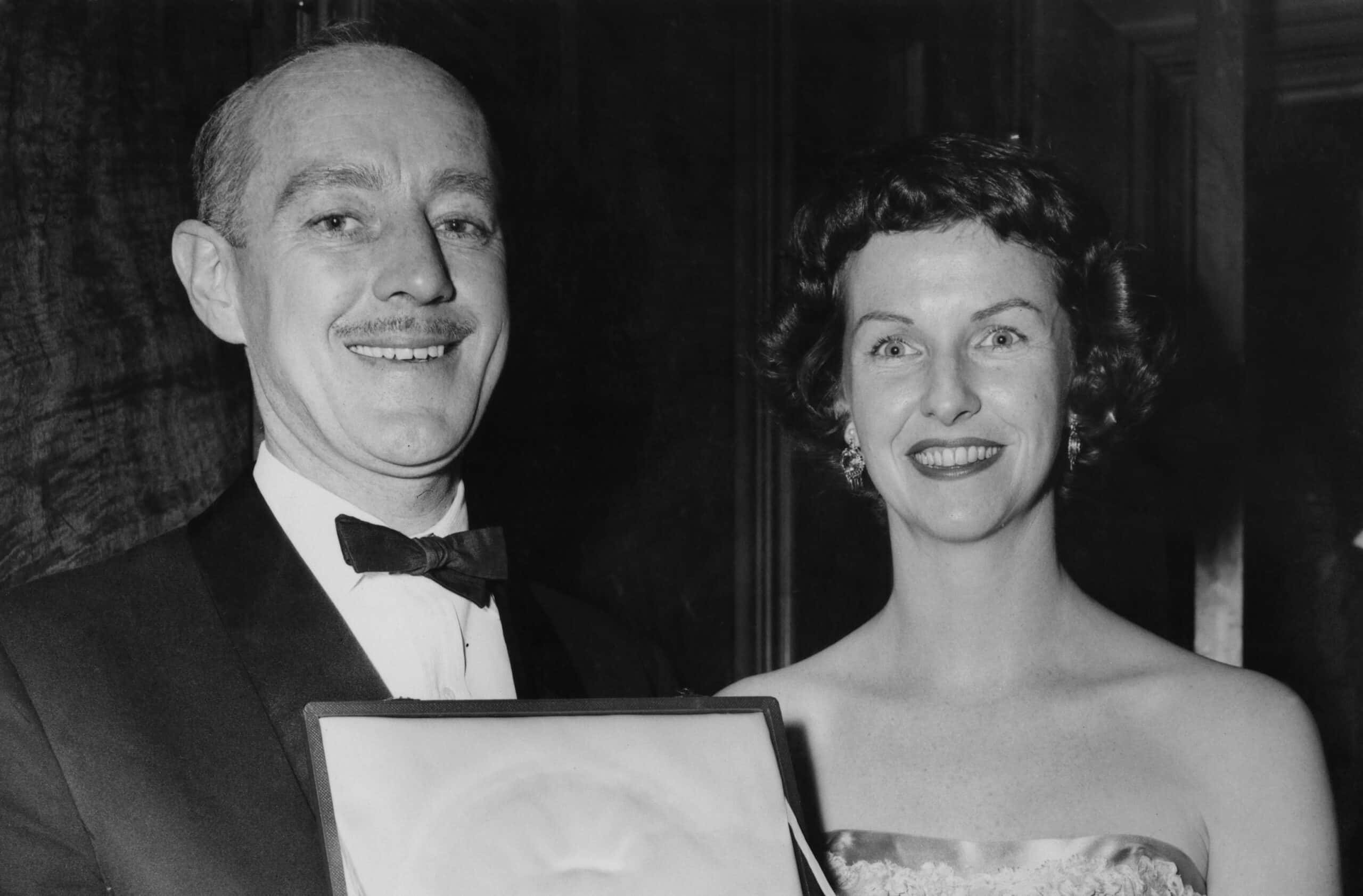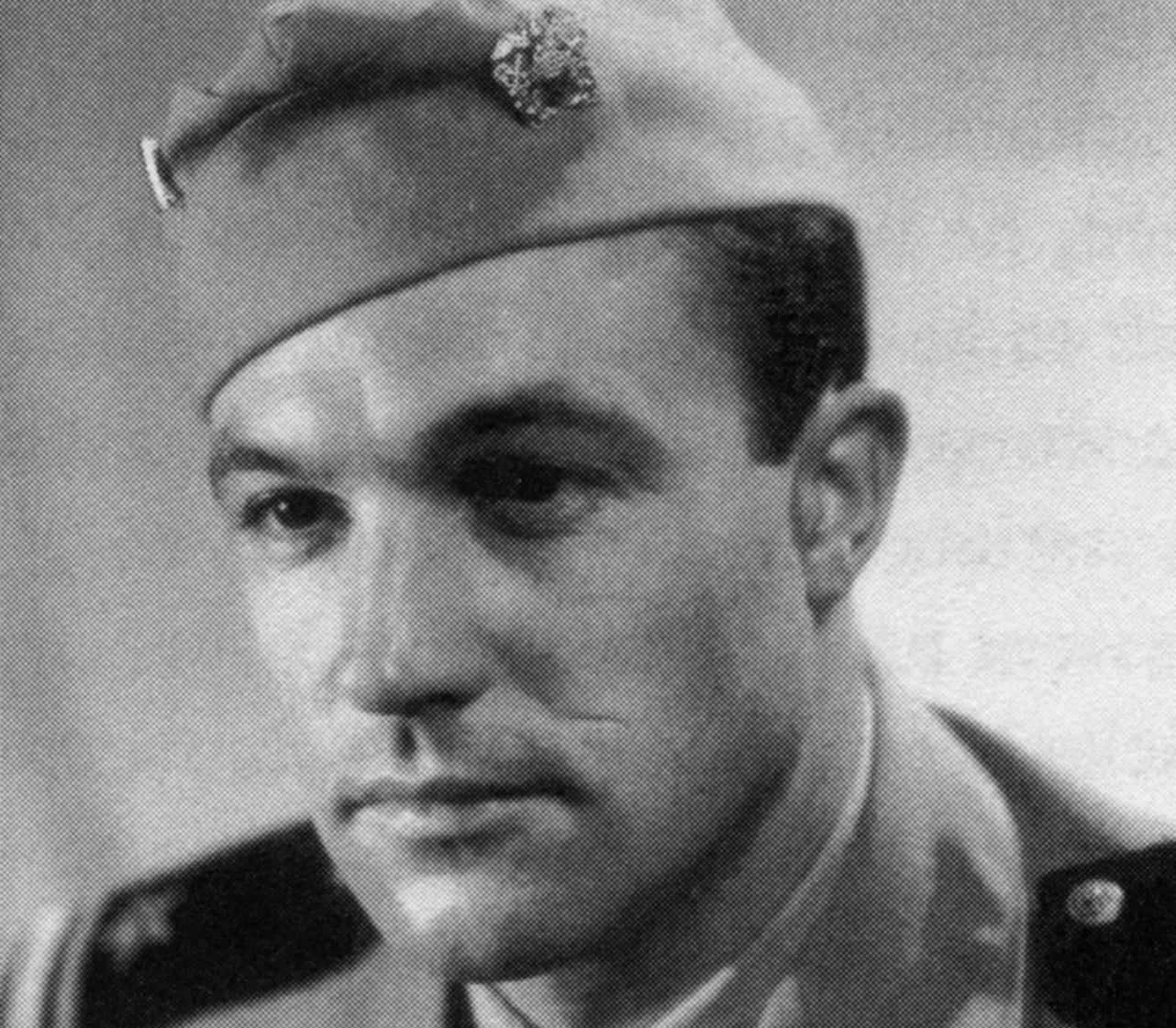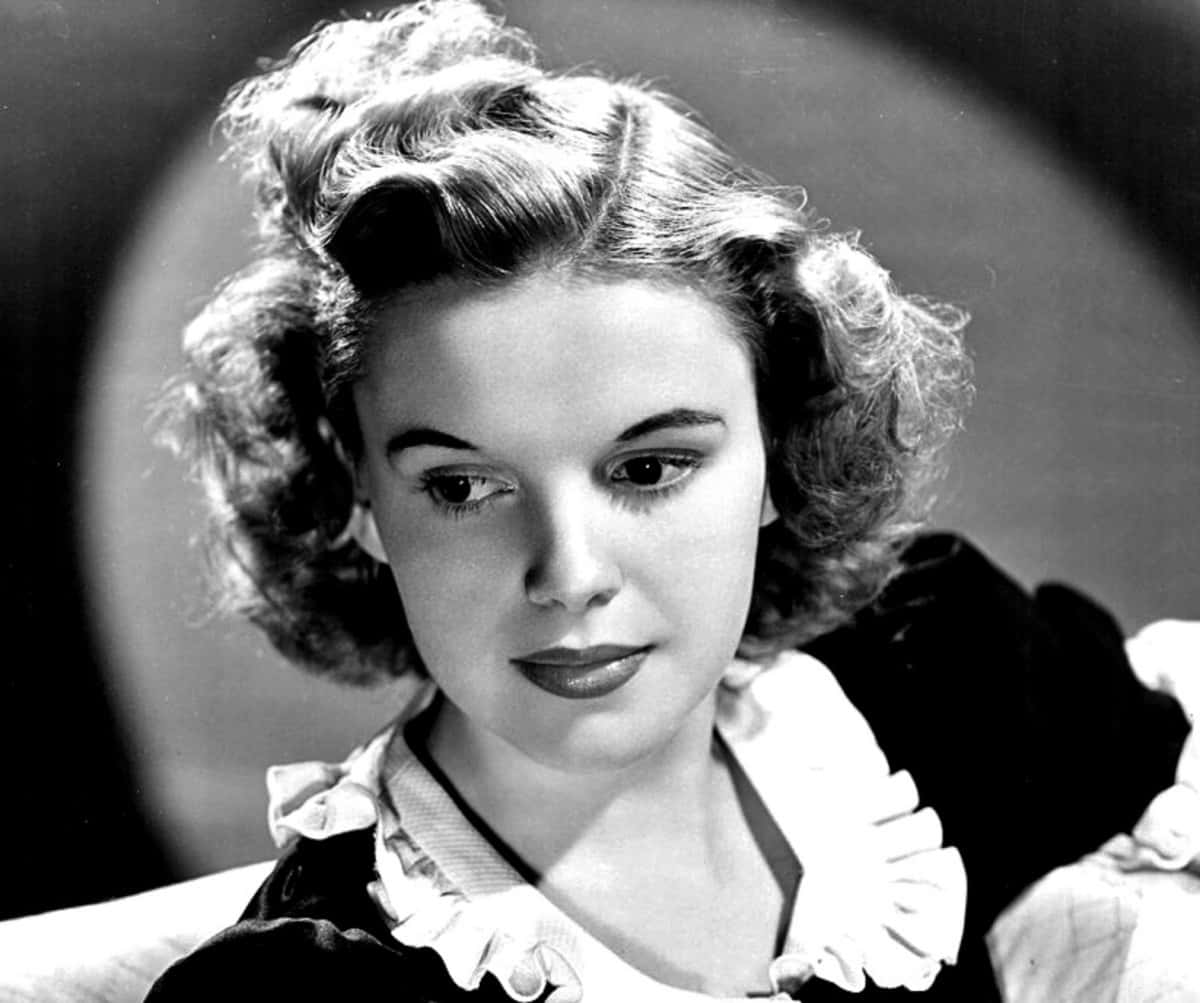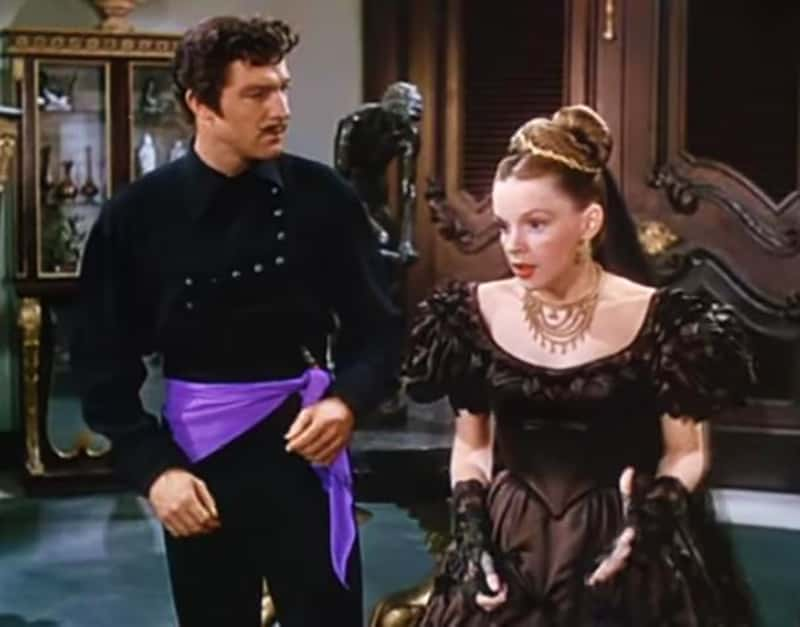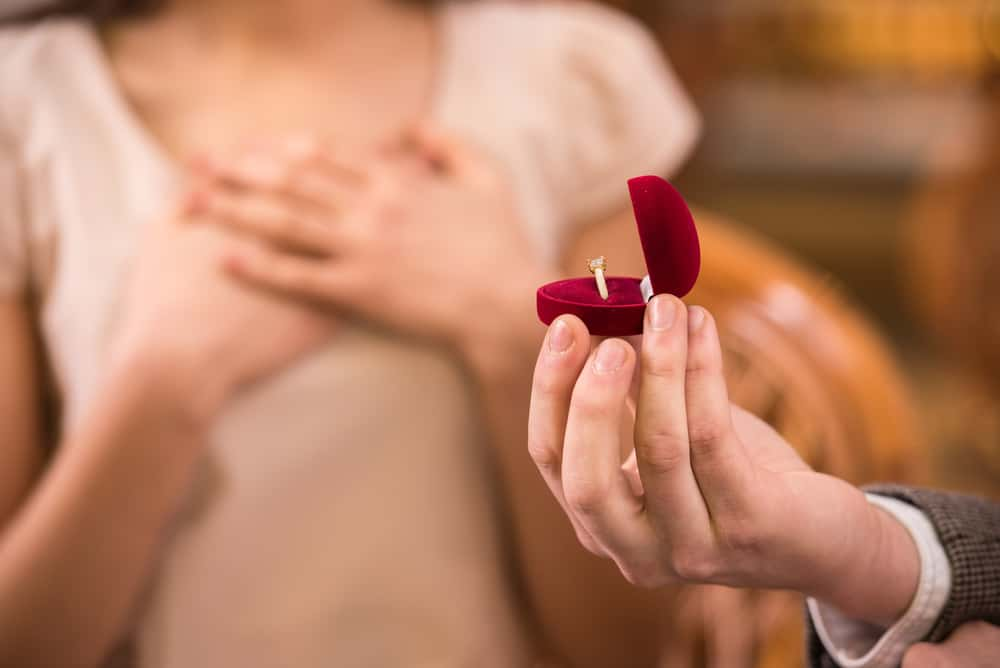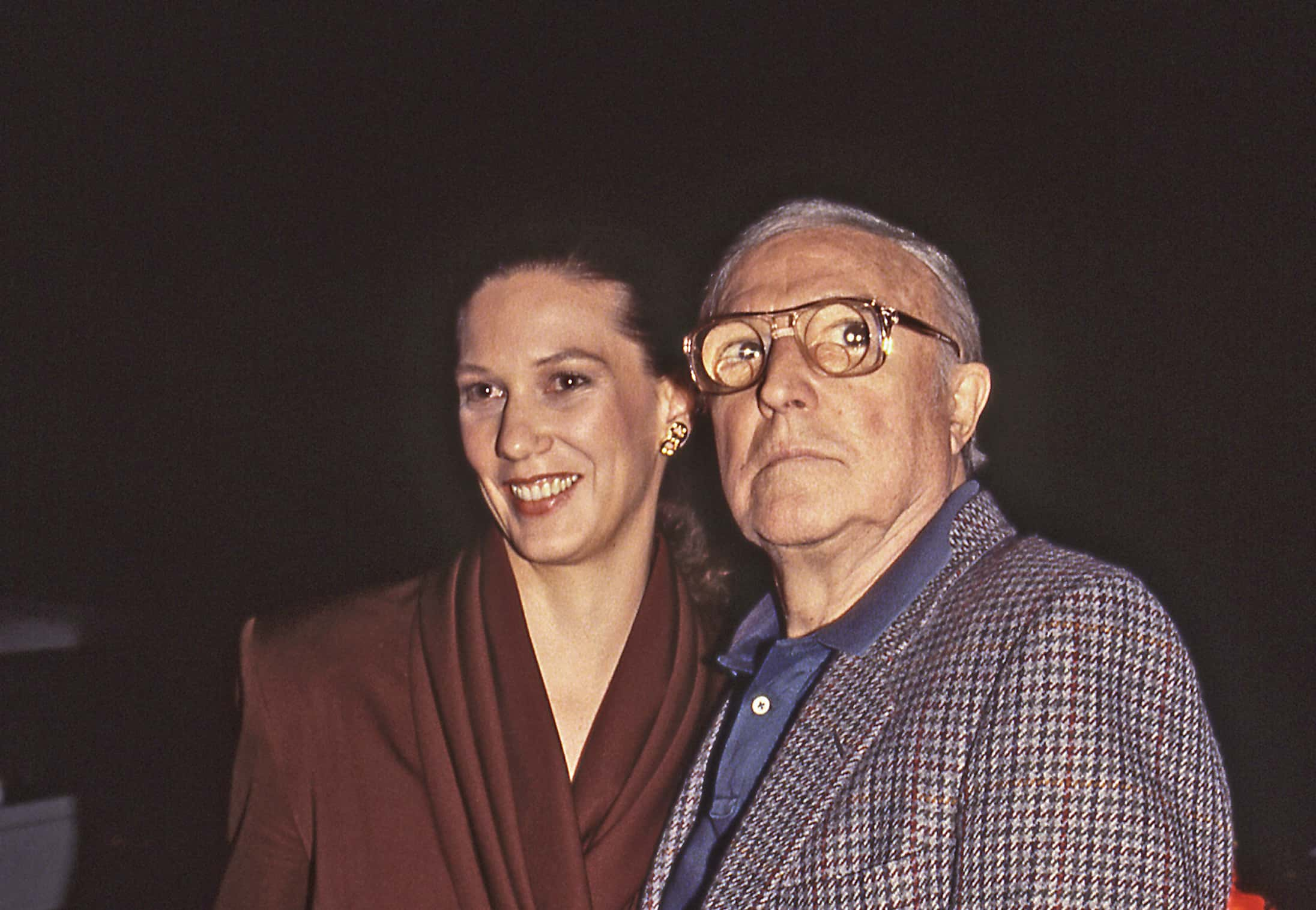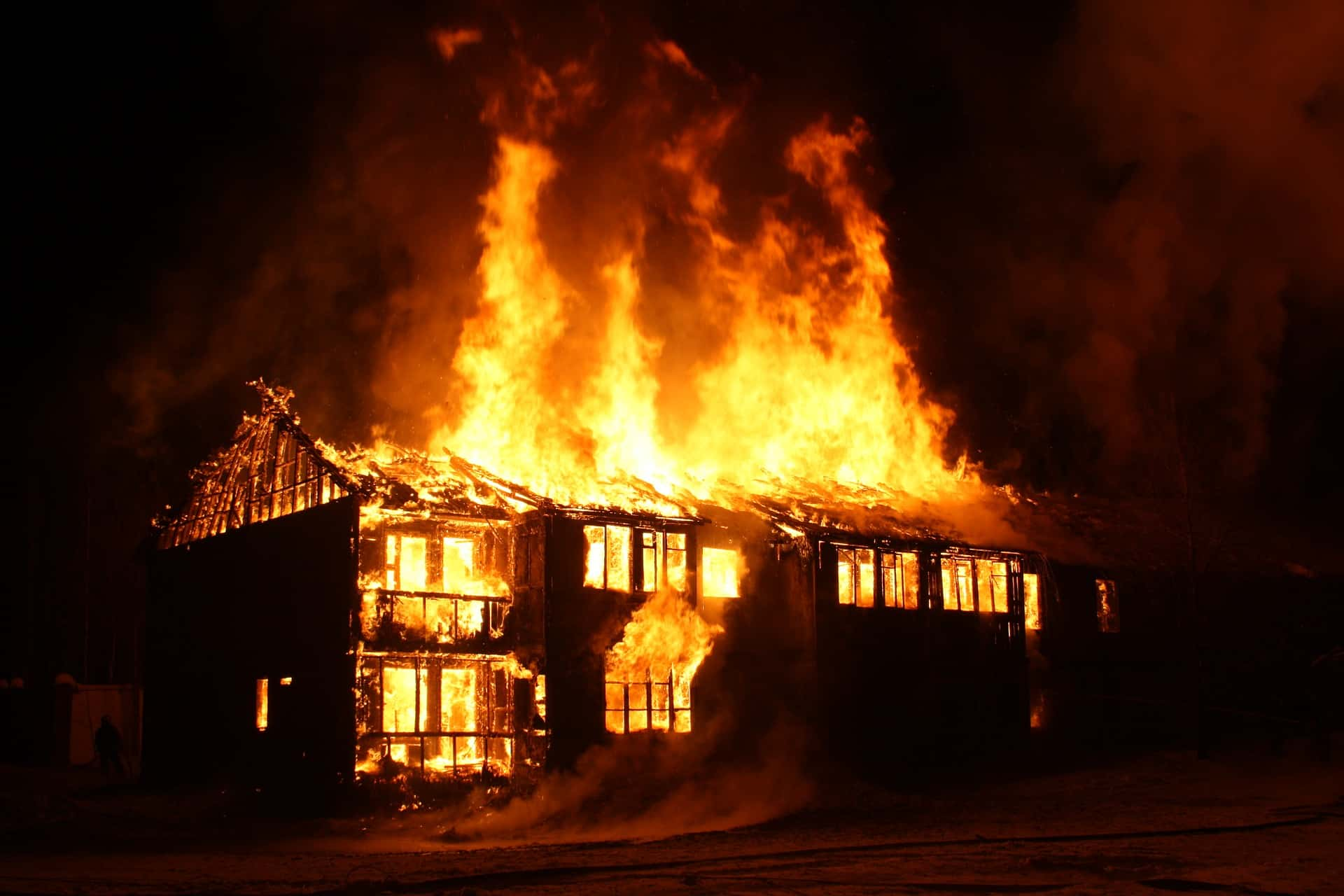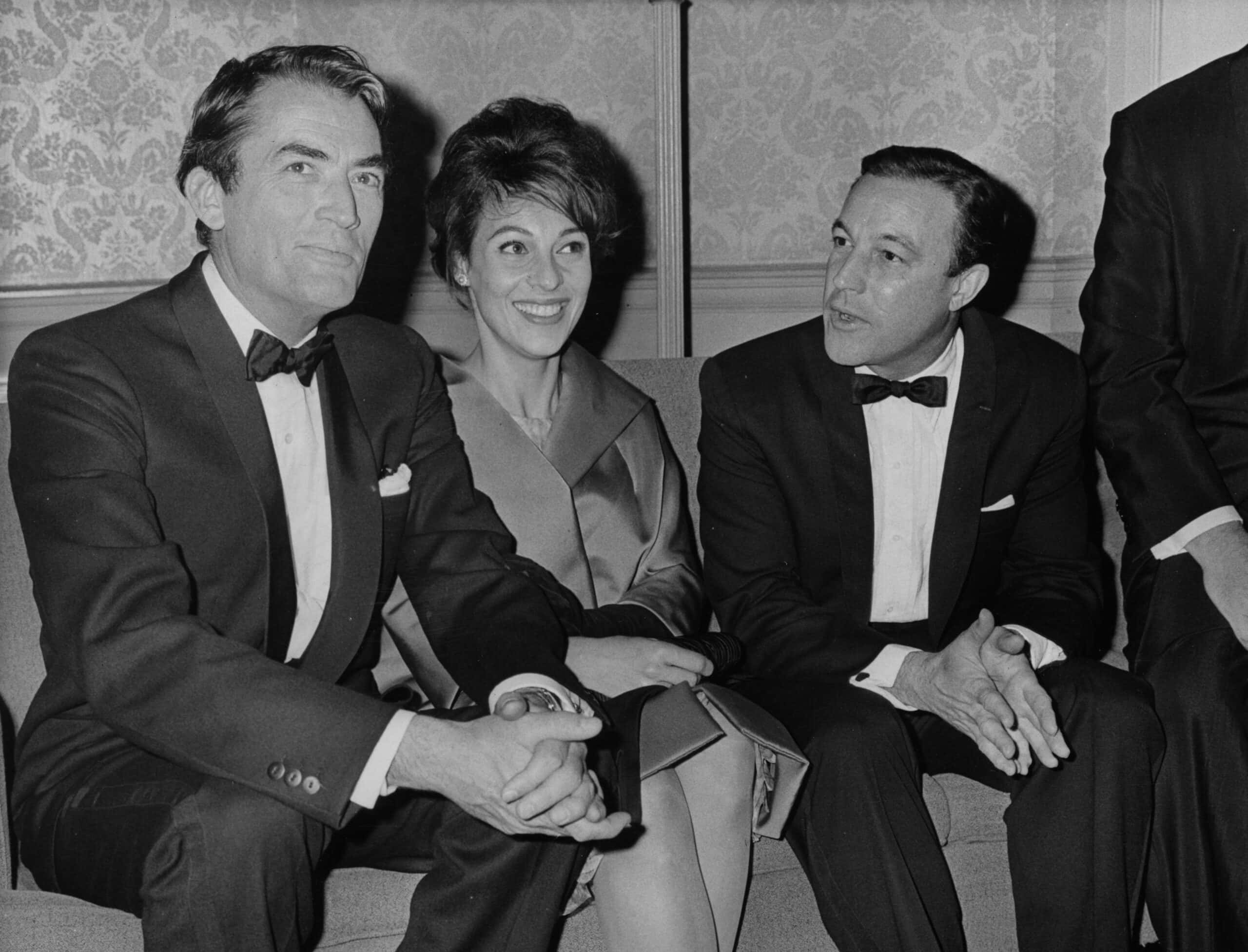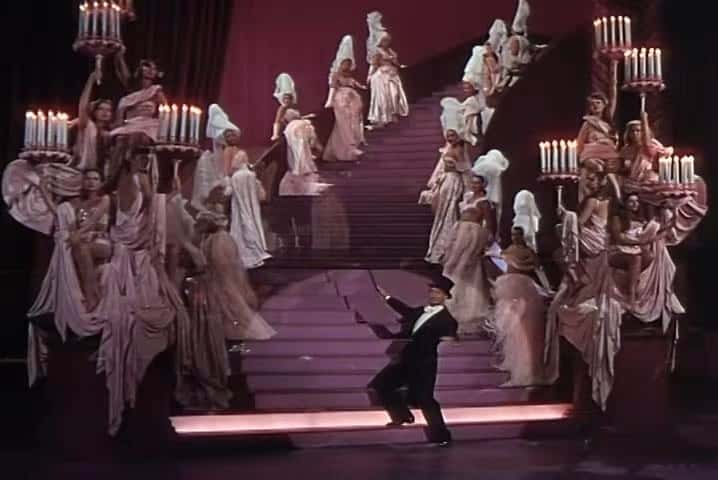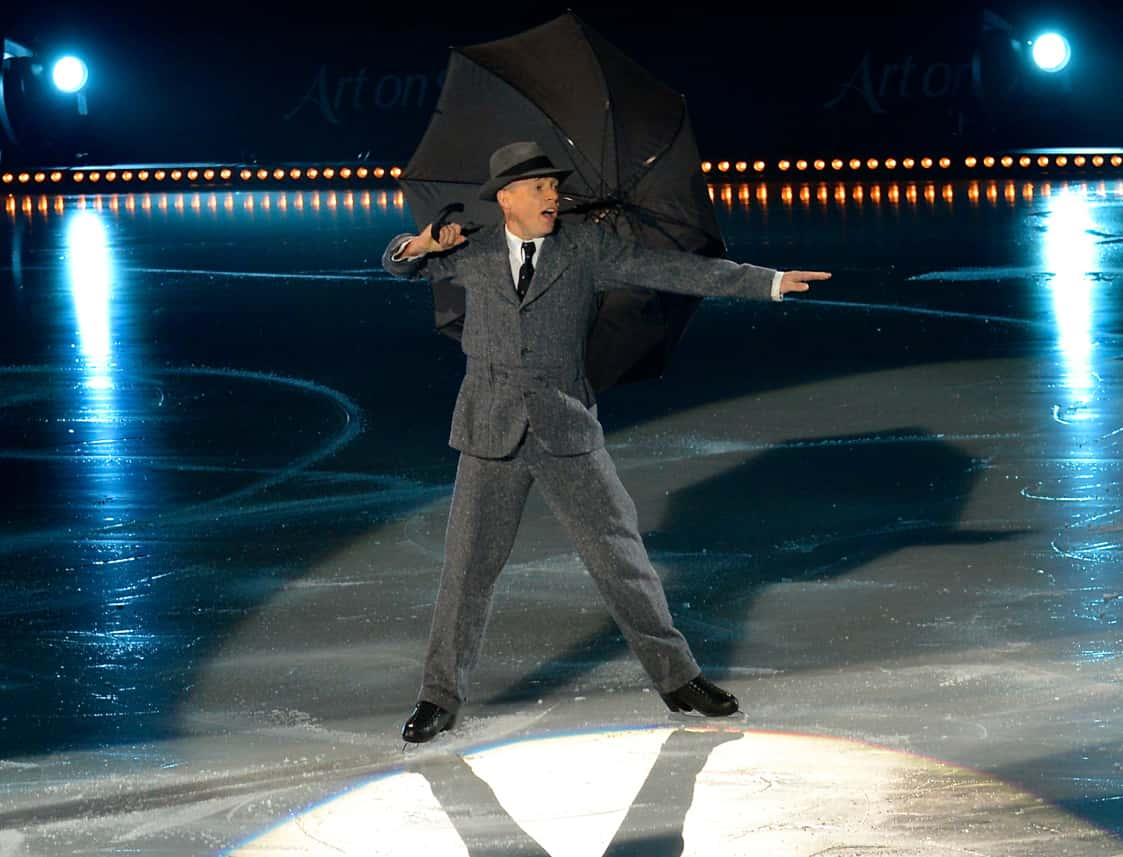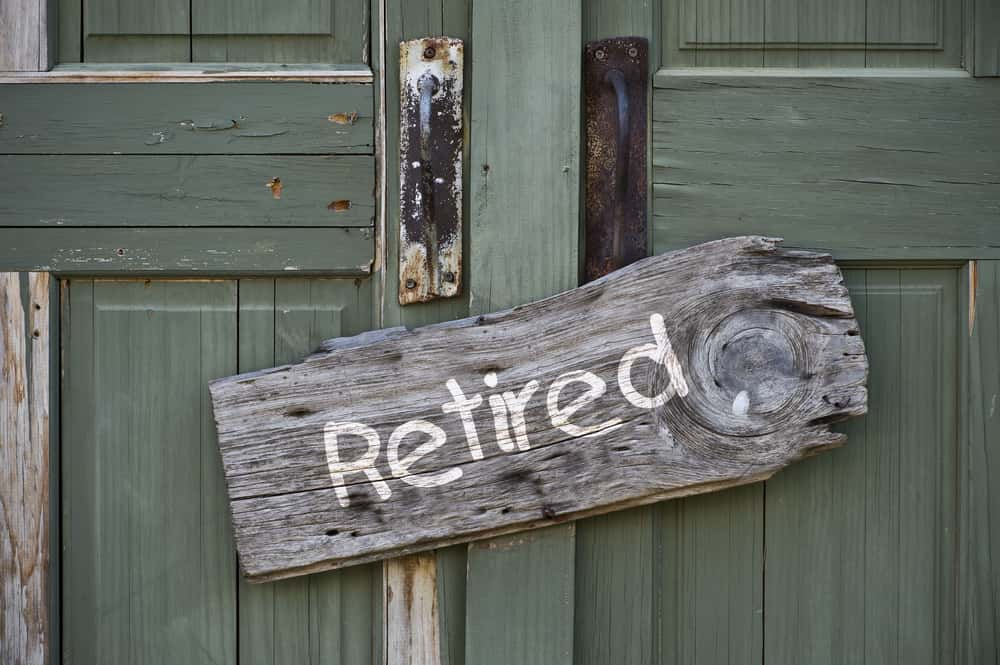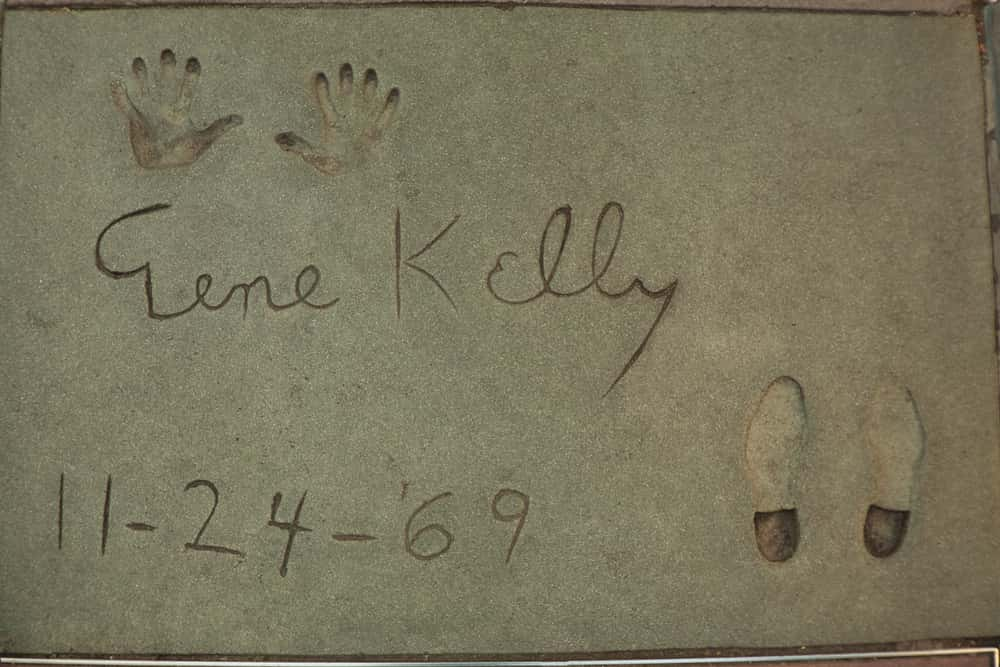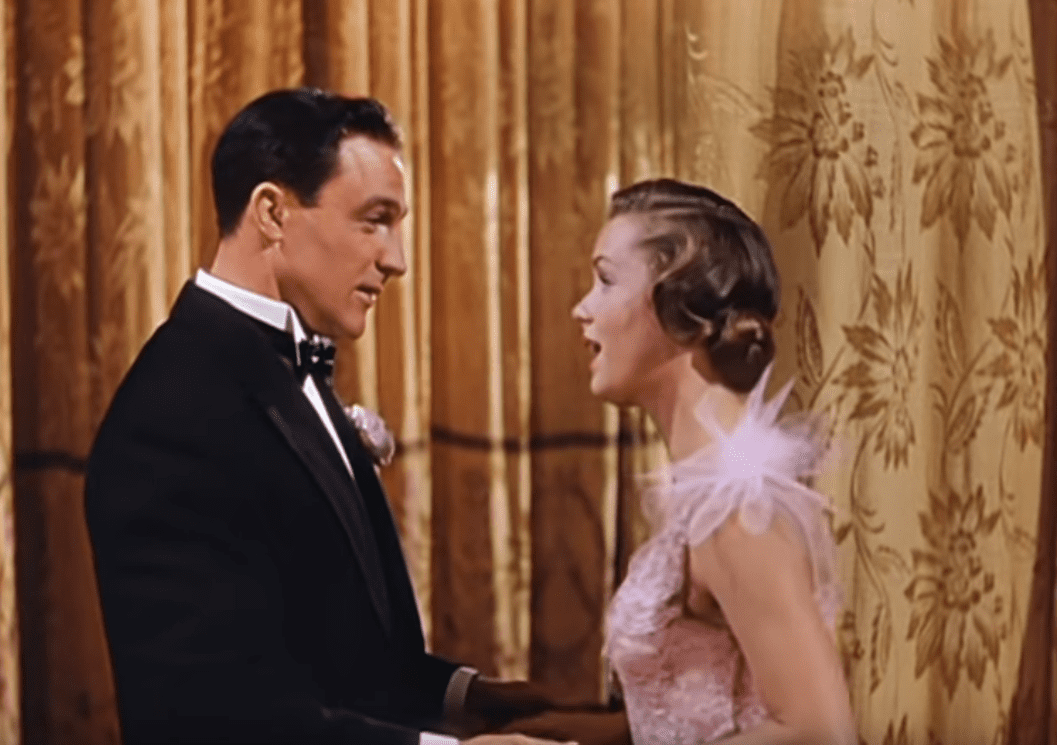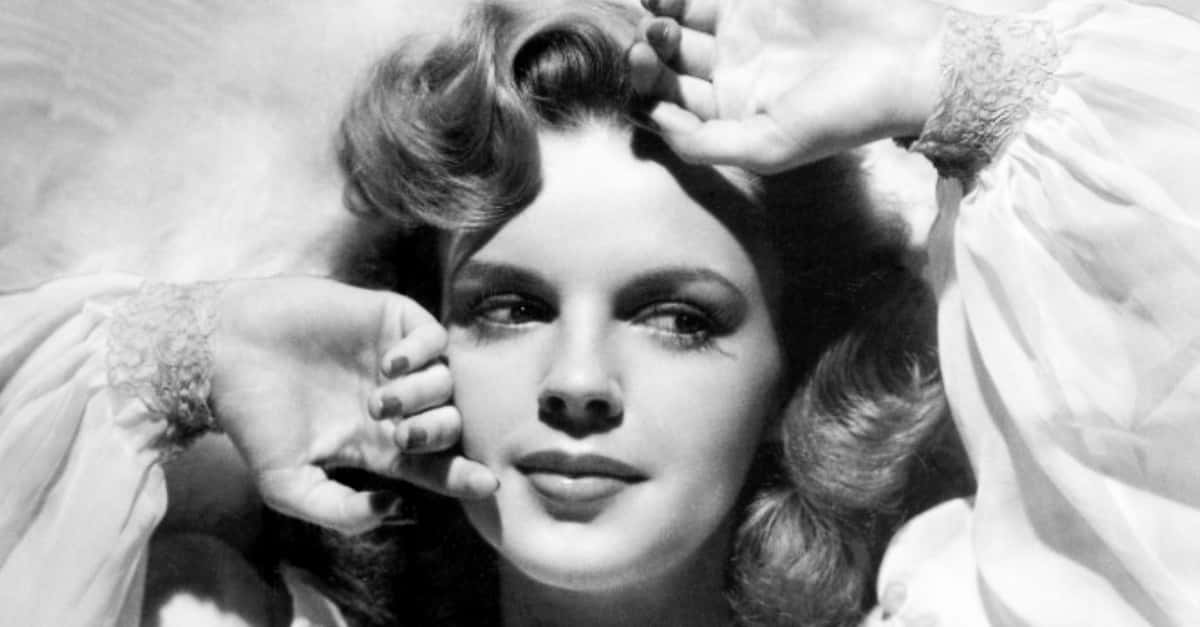Gene Kelly was a performer like no other. Seemingly able to do it all, he was an actor/singer/choreographer/producer, and of course, dancer. His style of dance was a combination of classical ballet and athleticism, and he did a great deal to change the way America viewed male dancers. He danced with a mouse, danced on roller skates, tapped and twirled, but he’s best remembered for his iconic umbrella dance in 1952’s Singin’ in the Rain, changing the movie musical forever. Below are 50 toe-tapping facts about the multi-talented dancer.
1. Learning from Athletics
Gene Kelly was always a tremendous athlete who played football, baseball, and took gymnastics. At age 15, he played hockey semi-professionally, and while he may not have chosen hockey as a career path, he did credit the sport for his "wide open and close to the ground" dance steps. And who says hockey and dance don’t mix?
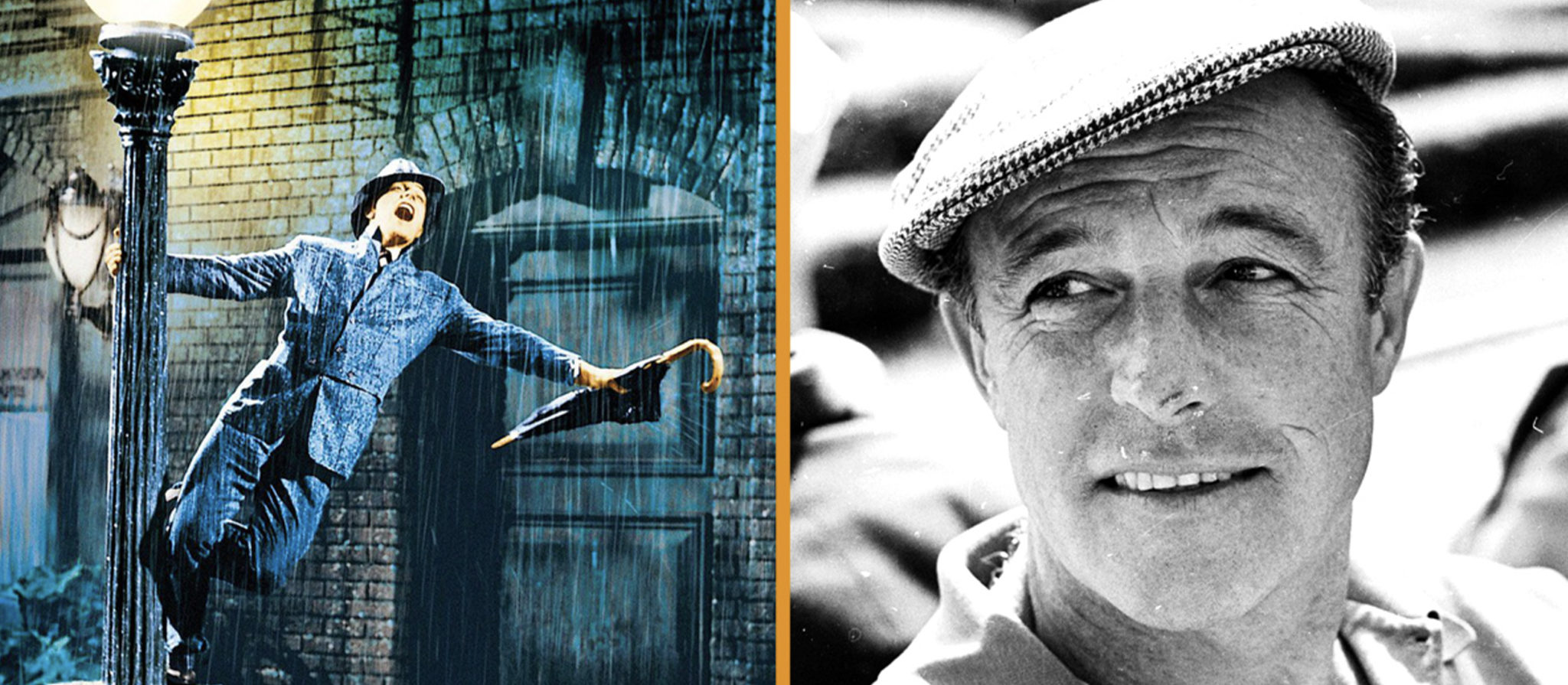
2. Redirected Dreams
Kelly once dreamed of playing professional baseball, and more specifically shortstop for his hometown Pittsburgh Pirates. His mother, however, had different ideas. She was the arts lover in the family and pushed Kelly to take dance lessons. He initially wanted to quit dance because he didn’t like being teased, but then he made a key discovery—girls love a boy who can dance!
3. A Tiny Blemish
Celebrity scars are sexy and interesting, and often have a good story to go with them. When Photoplay magazine asked Kelly about the scar on his left cheek, the answer was far less thrilling than one might have hoped. He got it in a tricycle accident when he was just five years old and not by any earth-shattering event.
4. A Family Act
Although Gene Kelly’s youngest brother Fred was the sibling who more immediately took to dancing, a young Kelly did perform with his four siblings in an amateur family act called "The Five Kellys," which his mom put together. They performed vaudeville acts throughout the 1920s, and in 1928, the Kellys started their very own dance academy. Kelly was on track for a bright future—but everything was about to change...
5. Doing What He Had To
With the Stock Market Crash of 1929, Kelly was forced to transfer out of the Journalism program at Penn State. He moved back home to attend the University of Pittsburgh as a money-saving measure. Kelly dug ditches, worked as a gas monkey, at a soda fountain, and as a carpenter’s helper to make enough money to stay in school.
 Cover Girl (1944), Columbia Pictures
Cover Girl (1944), Columbia Pictures
6. A Gifted Teacher
While studying at U Pitt, Kelly put his dancing skills to use. At age 19, he began teaching with his brother Fred at the family’s dance school. He’d visit night clubs, watch movie musicals, and attend vaudeville shows to learn new routines to teach his students. As his reputation grew, his mother decided to rename the studio The Gene Kelly School of Dance, and it proved to be a great idea.
7. Spreading His Wings
Teaching was great and all, but it wasn’t enough for Gene Kelly. Among other things, he also wanted to try choreography and directing. He also really wanted to learn ballet, so he attended summer classes at the Chicago Association of Dancing Masters. The school quickly recognized Kelly's talent and asked him to teach a few of the classes as well.
8. Give it a Try
It wasn’t long before word of Kelly’s talent caught the attention of Broadway professionals, including choreographer Robert Alton. At Alton’s urging, Kelly gave up teaching and headed for the Great White Way just before his 26th birthday. Success didn’t come as quickly as he’d hoped, but he did land a role as a chorus boy 1938 show Leave It to Me, choreographed by Alton.
9. Lucky Break
As with so many stars, the big break that Kelly was looking for came purely by chance. While attending a performance of William Saroyan’s play The Time of Your Life, a producer named Richard Rogers took notice of Kelly on stage. At the same time, Rogers was considering adapting John O’Hara’s novella Pal Joey into a musical, and upon seeing Kelly, he immediately wrote to O’Hara telling him he’d found their Joey.

History's most fascinating stories and darkest secrets, delivered to your inbox daily.
10. Breaking the Cardinal Rule
Soon after, Kelly arrived at what was probably the most important audition of his life. Then, while facing an intimidating group of Broadway bigwigs, including Rogers and O’Hara, Kelly made a terrible mistake: Rogers absolutely hated it when people auditioned with one of his songs, and that's exactly what Kelly did. It seemed as though Gene Kelly had blown his big shot before it even started...
11. Take Him!
Amazingly, Rogers neither stopped Kelly, nor did he throw him out—but he also didn’t say a word when Kelly finished the song. Panicked and not knowing what to do, Kelly immediately started singing his back-up piece. The second song was also met with silence, so Kelly assumed he’d failed. Just as he was getting ready to leave the stage, O’Hara broke the silence and shouted, "That’s it! Take him!"
12. But Is He Likeable?
One of Kelly’s worries about playing Joey was whether or not audiences would respond to his anti-hero character. As Kelly described it, Joey was "completely amoral," and he could "feel the waves of heat coming from the audience". However, once he started dancing, the audience quickly warmed up, and despite early mixed reviews, the show was a success.
13. That’s Not What You Promised
Although Gene Kelly ended up defining the MGM movie musical, his relationship with the infamous studio head Louis B. Mayer was always bitter, thanks to a series of misunderstandings before Kelly had even made a film. Mayer saw Kelly in Pal Joey and promised him that the studio would sign him without a screentest, and yet, somehow, the studio requested one anyway.
When Kelly heard about how he'd been lied to, he completely lost it...
14. No Way!
Insulted by the request, Kelly said no. He was so offended that he wrote a caustic letter to Mayer calling him deceitful and turning down their counteroffer. Kelly ended up under contract to Mayer’s son-in-law David O. Selznick’s studio. However, Selznick didn’t want to produce musicals, and thought Kelly could be a dramatic actor. Kelly thought he was done with MGM forever—but fate had other plans in store.
15. Full Circle
Kelly found himself back at MGM when Selznick's studio loaned him out to co-star with Judy Garland in For Me and My Gal. The movie was a huge hit for MGM, so they promptly bought him and his contract from Selznick. His next roles with MGM weren’t exactly star-making, and it took loaning him out to Columbia before they realized what they had in him.
16. Reaching New Heights
Cover Girl, the film that Kelly made with Rita Hayworth for Columbia, featured Kelly in a dance number with...himself. The film was revolutionary, bringing musicals to a new level. Suddenly MGM got very possessive of Kelly and refused to ever loan him out again—and his career suffered. Because of this, he was forced to turn down what could have been iconic roles in Guys and Dolls, Sunset Boulevard, and Pal Joey, the role he’d originated on Broadway.
 Cover Girl (1944), Columbia Pictures
Cover Girl (1944), Columbia Pictures
17. An Important Lesson
There are definitely lessons to be learned when making a transition from stage to screen, and Cover Girl served as an important epiphany for Kelly. With his groundbreaking dance number in the film, he realized that movie dancing is a completely different animal than dancing on stage, and he strove to invent moves that were just for film.
 Cover Girl (1944), Columbia Pictures
Cover Girl (1944), Columbia Pictures
18. Upending the Tradition
Gene Kelly is most often compared to his contemporary Fred Astaire, but the two men couldn’t be more different in style—and that’s just how Kelly wanted it. As he once told writer Charles Higham, when he came to Hollywood, he didn’t want to just follow in Astaire’s footsteps. He wanted to "bring dance to the people," and for them to "see themselves up there dancing" when they saw his movies.
19. Brando vs Grant
Astaire and Kelly are two of the most frequently compared and contrasted movie dancers, yet both men had distinct styles. Astaire was a ballroom dancer who was most comfortable in a top hat and tails, whereas Kelly was athletic and acrobatic. As to which one was better? As Kelly once put it, "If Fred Astaire is the Cary Grant of dance, I'm the Marlon Brando". In other words, there is no comparison.
 Cover Girl (1944), Columbia Pictures
Cover Girl (1944), Columbia Pictures
20. Reconsidering
Born into a large Irish Catholic family, Kelly attended Catholic school as a child, and seemingly considered himself Catholic. However, a 1939 trip to Mexico shook him to his core. Seeing how wealthy the church in contrast to the poverty of the people made him question everything he’d been taught.
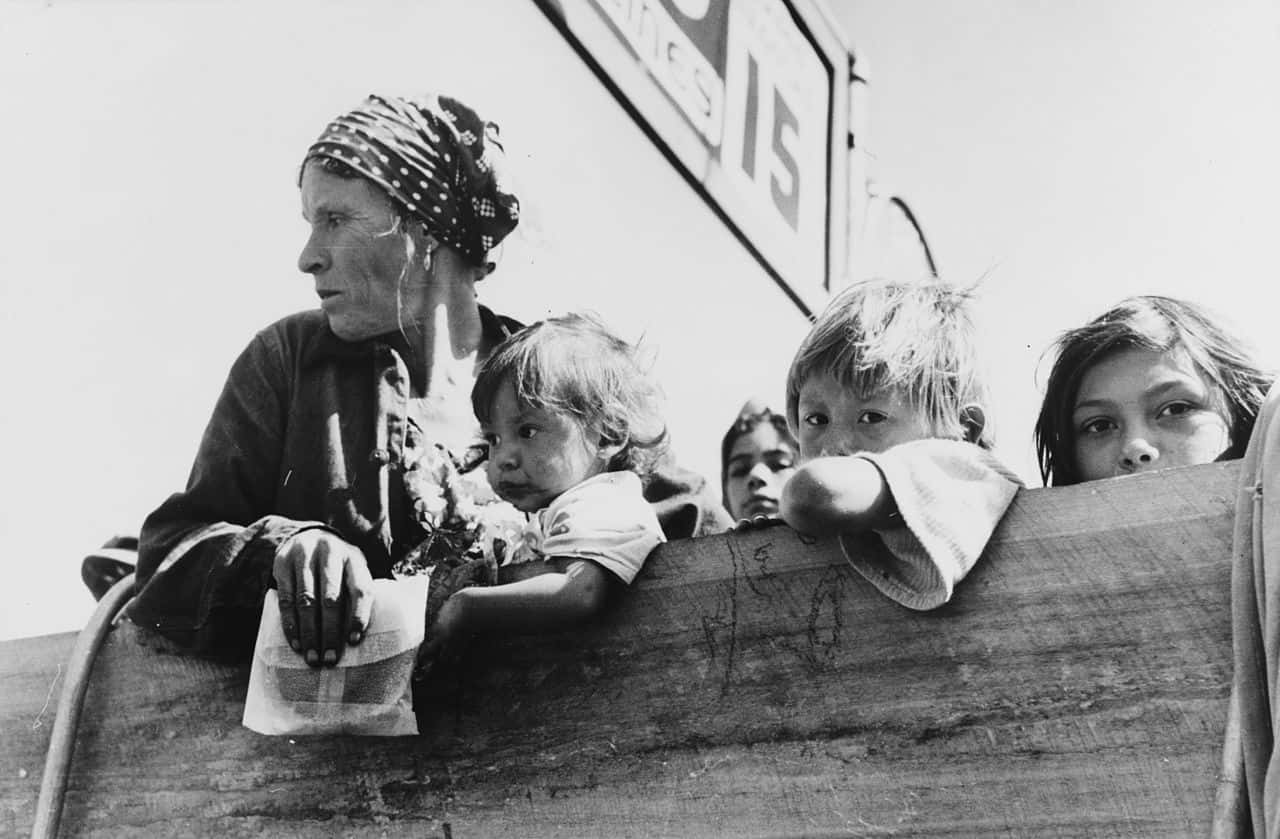 Wikimedia Commons
Wikimedia Commons
21. Complicated Faith
Experiences like his trip to Mexico led Kelly to declare himself agnostic. When he moved to New York City, he hooked up with a "free-thinking" bunch of people who weren’t exactly known for their religious beliefs. Kelly did still marry first wife Betsy Blair in a Catholic Church for his mother’s sake, and still sometimes attended mass, so it wasn’t quite cut and dry.
22. Proud Irish
The feelings that Kelly had about his religion may have been complicated, but there was no question of how he felt about his Irish heritage. Kelly had Irish grandparents on both sides, and according to his widow Patricia Ward Kelly, he was proud of his Irish roots and felt that they were a key part of who he was.
23. I Want You
Most people aren't aware of the rather disturbing age difference between Gene Kelly and his first wife. While Kelly was 28 when he first met Betsy Blair, she was only sweet 16. A year later they were married, but Kelly wasn’t looking for a traditional stay-at-home wife. When Blair asked him if he was unhappy with her lack of skill as a homemaker, he gave the perfect answer: "What I want is what I have, you—to pick flowers and read by the fireplace and sing around the house.".
24. For His Mother’s Sake
Whether he believed in Catholicism or not, clearly, he wanted his mom to think he did. When his daughter was born, he and Blair would bring her to church...but only when his mom was visiting. They taught her Catholic prayers, also for his mom, and when they visited Rome, he got a blessing from the Pope for, you guessed it—his mother!
25. Protesting the Blacklist
From the late 40s through the 50s, Hollywood became a pretty scary place. The formation of the House Un-American Activities Committee, which blacklisted and even jailed actors for being suspected Communists, left many in the industry terrified. In response, Kelly, along with actors such as Lucille Ball, Humphrey Bogart, and Lauren Bacall, joined the Committee for the First Amendment.
If the government was going to threaten their peers, these stars were not going to go down without a fight.
26. Mr. Kelly Goes to Washington
As noble as their intentions were, the committee’s trip to Washington had utterly disastrous effects for many members. What they wanted was to use their influence to champion free speech. Instead, many, including Kelly’s wife Blair, ended up being suspected of being Communist sympathizers, which nearly destroyed her career.
27. Demanding Perfection
Every star wants their films to look good, but Gene Kelly was a next-level perfectionist. He not only expected perfection from himself, but also demanded it from his co-stars—and Frank Sinatra had to learn that the hard way. It took Sinatra 72 takes before Kelly was satisfied with his dance number in Anchors Aweigh, and if not for Kelly, Sinatra felt that he could have shot the entire movie in eight weeks. Maybe he was a bit picky.
 Wikimedia Commons
Wikimedia Commons
28. Honoring a Great
Kelly seems to have won every award in the book. He earned a Kennedy Center Honor, a lifetime achievement award from the American Film Institute, the Chevalier of the Legion of Honor from the French government, and the American National Medal of Arts—and yet he always said he was "just a song and dance man". I’d say he was a lot more than that!
29. Not Her Dream Anymore
One might assume that Kelly’s workaholic and perfectionist nature is what led Blair to divorce him after 16 years, but she wasn’t actually unhappy with their marriage. Blair had given up college to marry Kelly, and after a while, she just realized that she needed to see what other life was out there for her. The pair split in 1957 after 16 years of marriage.
30. Dancing with Jerry
Kelly loved to play around with dance in film, and he made film history when he danced a duet with the cartoon mouse Jerry (as in Tom and Jerry) in Anchors Aweigh. Originally, MGM wanted Kelly to dance with Micky Mouse, but Disney reportedly refused to allow the character to appear in a non-Disney film, so they used Hanna-Barbera’s Jerry mouse instead.
31. Doing His Part
Funnily enough, immediately after playing a sailor in Anchors Aweigh, Kelly became a real sailor. Like many young men, Kelly wanted to serve his country, so he asked MGM to grant him leave to join the Navy. While serving, he made a training film about combat fatigue (PTSD) and was mistakenly thought to be suffering from the condition himself when he was photographed at a naval hospital.
Fortunately, he was just there undercover, doing research for the film.
32. Repaying a Favor
When Kelly was just starting out, Judy Garland played a big role in getting him cast opposite her in For Me and My Gal. From that moment on, Kelly was completely dedicated to Garland, and several years later, when he knew that she was struggling, Kelly repaid the favor by accepting a role in her film Summer Stock in an effort to save her career.
33. Creating the Technology
What do you do when the technology doesn’t exist yet to do what you want? Why, you invent something of course! Technicolor cameras were pretty massive in Kelly’s time, and their size made it impossible to get the kind of low-angle shots that Kelly wanted. Determined to get his desired effect, Kelly invented the Ubangi (also known as "camera offset") for his 1948 film The Pirate. That’s one way to solve a problem.
34. I Get By
Believe it or not, nobody doubted Kelly’s acting abilities more than Kelly. From the moment he arrived in Hollywood, he believed that he was a better stage actor than film actor, and he (and some critics) thought he was trying too hard to prove himself worthy. As much as he would have liked to be compared to Spencer Tracy or Marlon Brando, he called himself "just passable" in films.
35. What Can We Do with It?
When the co-writer of the song "Singin’ in the Rain" asked Kelly how he thought they might be able to use it in the movie, at first Kelly was stumped. That night he went home and thought about it some more, and suddenly he knew—dance to it! Kelly was definitely onto something, because the number became one of the most famous in movie musical history!
36. The Shoot Must Go On
Kelly looks like a perfect Hollywood star in Singin' in the Rain—but what most people don't realize is, Kelly was in agony for the most iconic scene. It’s hard enough dragging yourself out of bed when you’re sick with a fever, so imagine what kind of misery it must have been for Gene Kelly to dance movie's the signature number with a temperature of 103F.
So why did he put himself through that? As his widow, Ward Kelly, pointed out, when you’re the director/choreographer/star of your movie, it’s not feasible to take time off, so Kelly just pushed through it.
37. Cutting Costs
There was never any question that Brigadoon would be a passion project for Gene Kelly, but it didn’t end up the way he’d envisioned. Kelly loved Scotland, so he wanted the film to be shot entirely in the Scottish Highlands. As a cost-saving measure, the new studio head nixed the idea of shooting on location, forcing them to shoot on the MGM lot. Kelly reportedly became frustrated with the constant short cuts and stayed that way throughout the shoot. Not that you can blame him.
38. Second Chance at Love
Kelly was one of those men who liked his women young, and his other two wives were both quite a bit younger than him. His second wife, Jeanne Coyne, was 10 years his junior. Both a dancer and Kelly’s assistant, he fell in love with and married her in 1960, soon after his divorce from Blair. They had two children together, but their love met a heartbreaking end. They remained together until Coyne passed on from Leukemia in 1973.
39. He Didn’t Seem that Old
May-December romances are hardly unusual, but what did make Kelly’s third marriage notable was the 47-year age gap between him and Patricia Ward. She first met Kelly when she was 26 and he was 73, and she’d never heard of him or seen any of his movies. The difference didn’t seem to bother Ward, and though she knew how it might look, she claimed he "didn’t seem that old" and to have "never even thought about the age difference". Right...
40. Heroic Rescue
If not for the quick actions of Kelly’s son Timothy, the 1983 fire that destroyed his historic home might have ended in tragedy. Authorities believe that faulty Christmas lights caused the fire, and it was only by the grace of the smoke detector and Timothy’s help that Kelly got out. Thankfully, his daughter Bridget and their two dogs also made it out mostly unscathed, so it could have been a lot worse!
41. Sore Loser
Some people just don’t know how to lose, and Kelly was definitely one of those. He was so competitive that even a friendly volleyball game became seriously tense. He became so enraged after being hit by a ball that he not only yelled at his teammates for deliberately playing badly, he stomped his foot so hard on the ground he broke his ankle and could no longer star in Easter Parade.
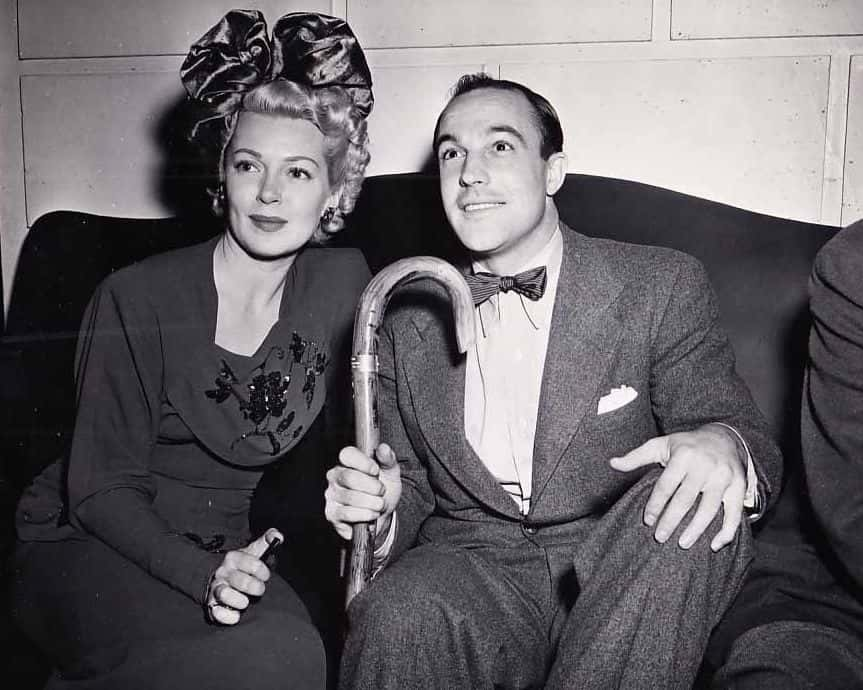 Wikimedia Commons
Wikimedia Commons
42. Temper, Temper!
The volleyball incident wasn’t the only time that Kelly’s competitiveness resulted in injury. In fact, it eventually ended his dancing career. While on a ski trip in Switzerland in 1958, Kelly decided to try and show up a group of Olympic skiers. His ego trip resulted in torn cartilage in his knee and was pretty much the end of what he called "serious dancing".
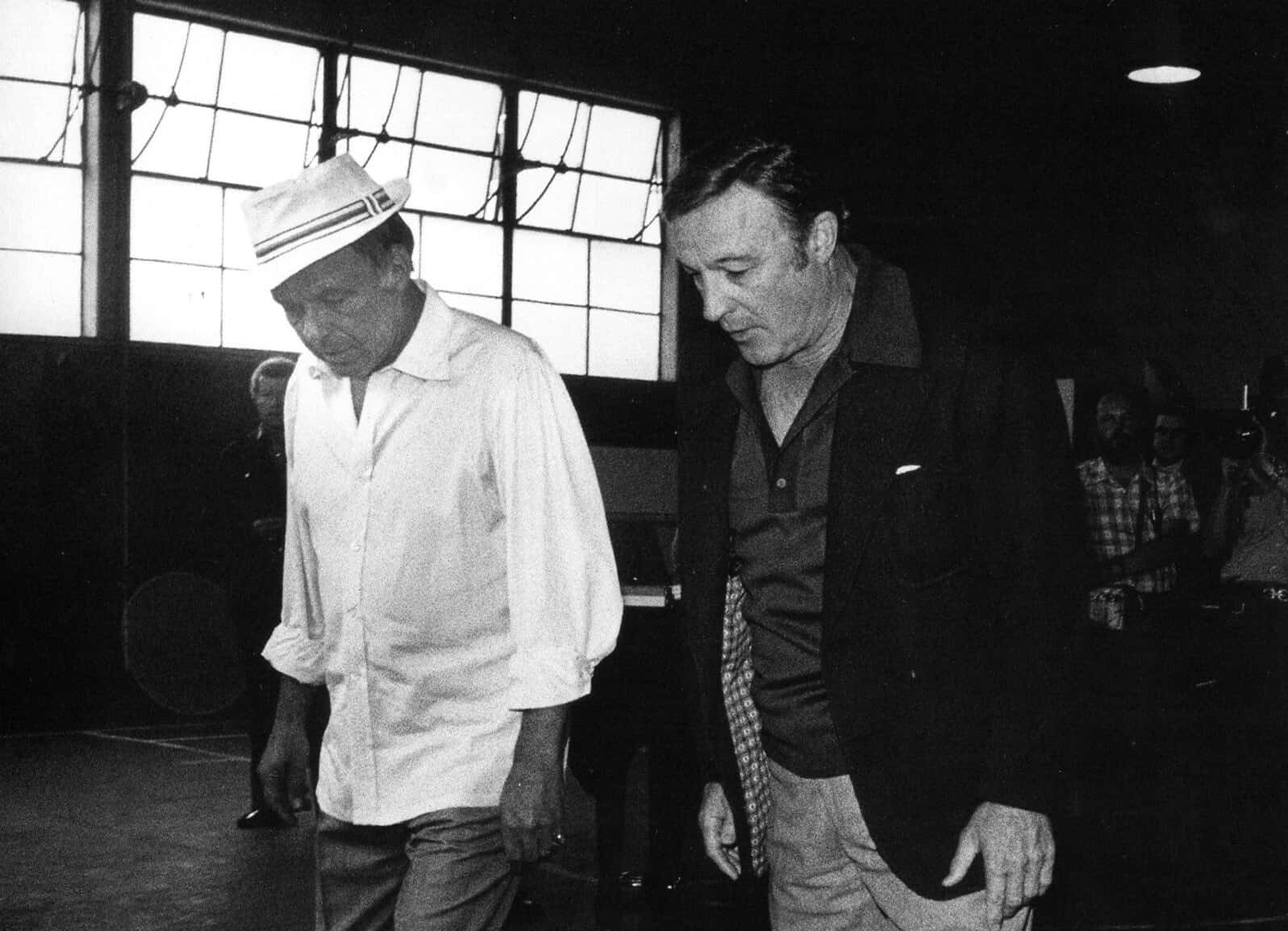 Flickr, kate gabrielle
Flickr, kate gabrielle
43. Intense Charades
Kelly and Blair were known for hosting almost weekly parties, and these get-togethers often included a game similar to charades. Like everything else Kelly did, he took it incredibly seriously, and he could get pretty scary. Luckily, stumping Kelly and Blair proved extremely difficult—which was probably best for everyone involved.
44. His Favorite Film
An American in Paris was Gene Kelly’s favorite film, and with good reason. The picture reached almost immortal status for its 17-minute long ballet sequence set to the titular piece and choreographed by Kelly. Something like this had rarely been done in film, and it was one of the most extravagant and expensive film sequences ever. While Kelly didn’t directly win any awards for the film, it did win the Best Picture at the Academy Awards, and Kelly received an honorary Oscar for his work on the film.
45. Kelly On Ice
World Champion figure skater Kurt Browning has often been called "Gene Kelly on Ice" for the way he moved on skates. Browning admitted that he was honored by the comparison, and proved worthy of it with his now-iconic "Singin’ in the Rain" routine. Whether or not Kelly ever saw the routine is unknown, but he did appreciate figure skating, so one can only assume.
46. It’s Time to Quit
46 years old might seem like a young age for retirement, but as Kelly explained, when he felt like it was time to hang up his dancing shoes because he could no longer get the reaction he wanted from audiences. He also added that while he could have continued dancing in some way forever, he couldn’t "be satisfied with dancing ...when you can't jump over a table but you have to take a run at it".
47. Timeless Treasure
Although Kelly passed on in 1996 after a series of strokes, his legend and influence are still present everywhere. He’s frequently referenced in contemporary film, movie, and reality dance shows, and singer/dancer Usher loves Kelly so much, he specifically chose to perform Kelly’s number from Singin in the Rain in a CBS TV special. Totally timeless!
48. A Painful Experience
Working with a guy like Gene Kelly wasn’t easy at the best of times, but it was literally painful for his female co-stars. He worked Debbie Reynolds so hard she was reduced to tears and called him a "cruel taskmaster". Take Me Out to the Ballgame co-star Esther Williams complained that he gave her scoliosis from having to slouch, and he accidentally broke Lana Turner’s elbow in a stage fight. Talk about suffering for their craft!
 Take Me Out to the Ball Game (1949), MGM
Take Me Out to the Ball Game (1949), MGM
49. A Not-So-Chaste Kiss
Gene Kelly was the perfect romantic lead on screen—but behind the scenes, he could be a disturbing man. Debbie Reynolds was only 18 when she filmed Singin’ in the Rain and she’d never done a kissing scene before. In her memoirs, she recalled a particular scene with Kelly where he gave her much more than she bargained for. Rather than giving her the innocent kiss she’d been expecting, he "shoved his tongue down her throat" and completely freaked her out.
50. A Selfish Act
Kelly might have been a charmer on screen—but there was a dark side to his personal life. After the war ended, Kelly sent his and Blair’s daughter Kerry to live with her mother’s parents and only saw her once a week. It was an act which Kelly later regretted, calling it "selfish, unfatherly neglect," and admitting that he and his wife "just wanted to have a good time".
To be fair to Kelly, his daughter remembers him as an "involved and wonderful parent," so maybe it wasn't as bad as it sounds.
Sources: 1, 2, 3, 4, 5, 6, 7, 8, 9, 10, 11, 12, 13, 14, 15, 16, 17, 18, 19, 20, 21, 22, 23, 24, 25, 26, 27, 28, 29, 30, 31, 32, 33, 34, 35, 36, 37, 38, 39, 40, 41, 42, 43, 44

